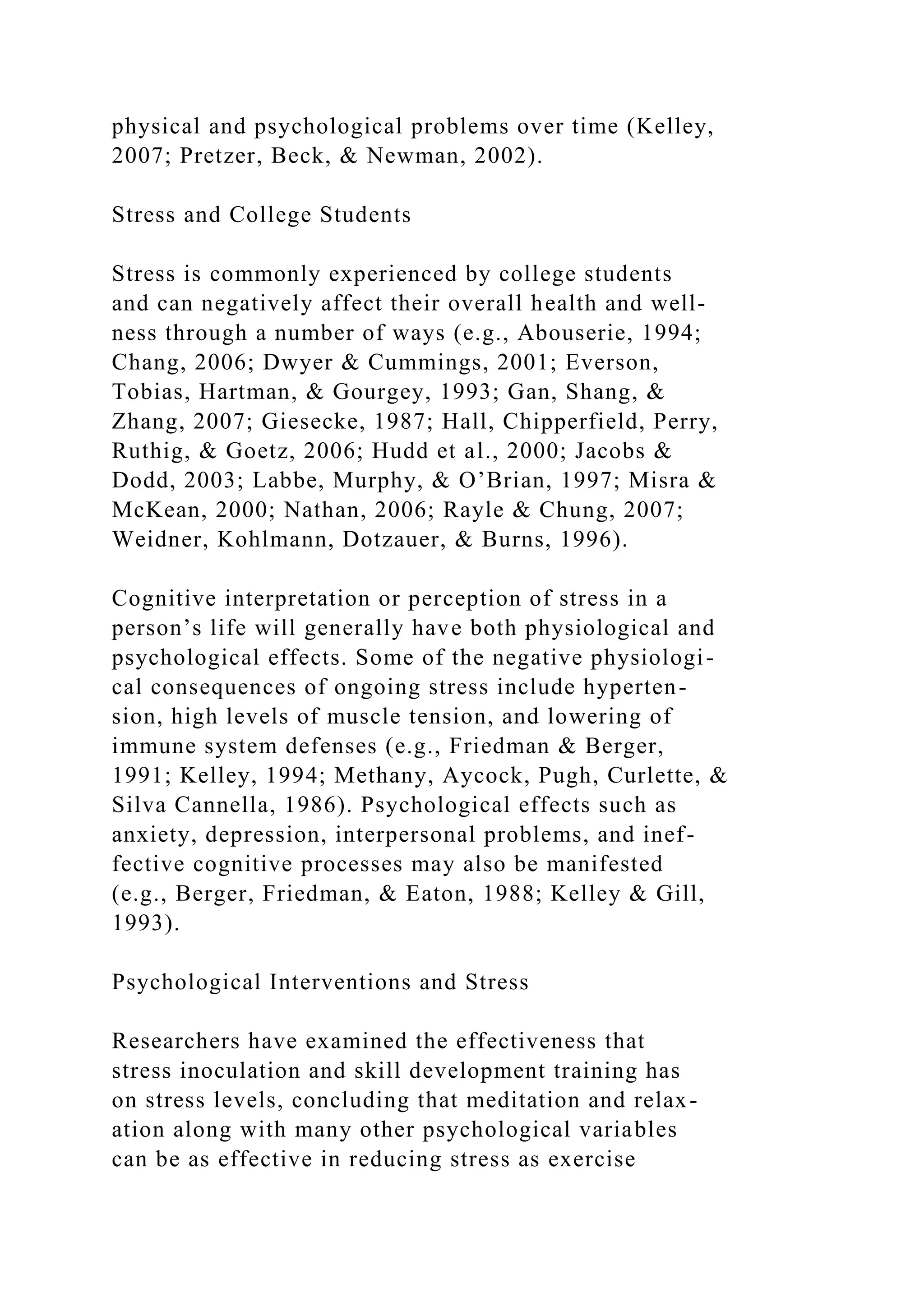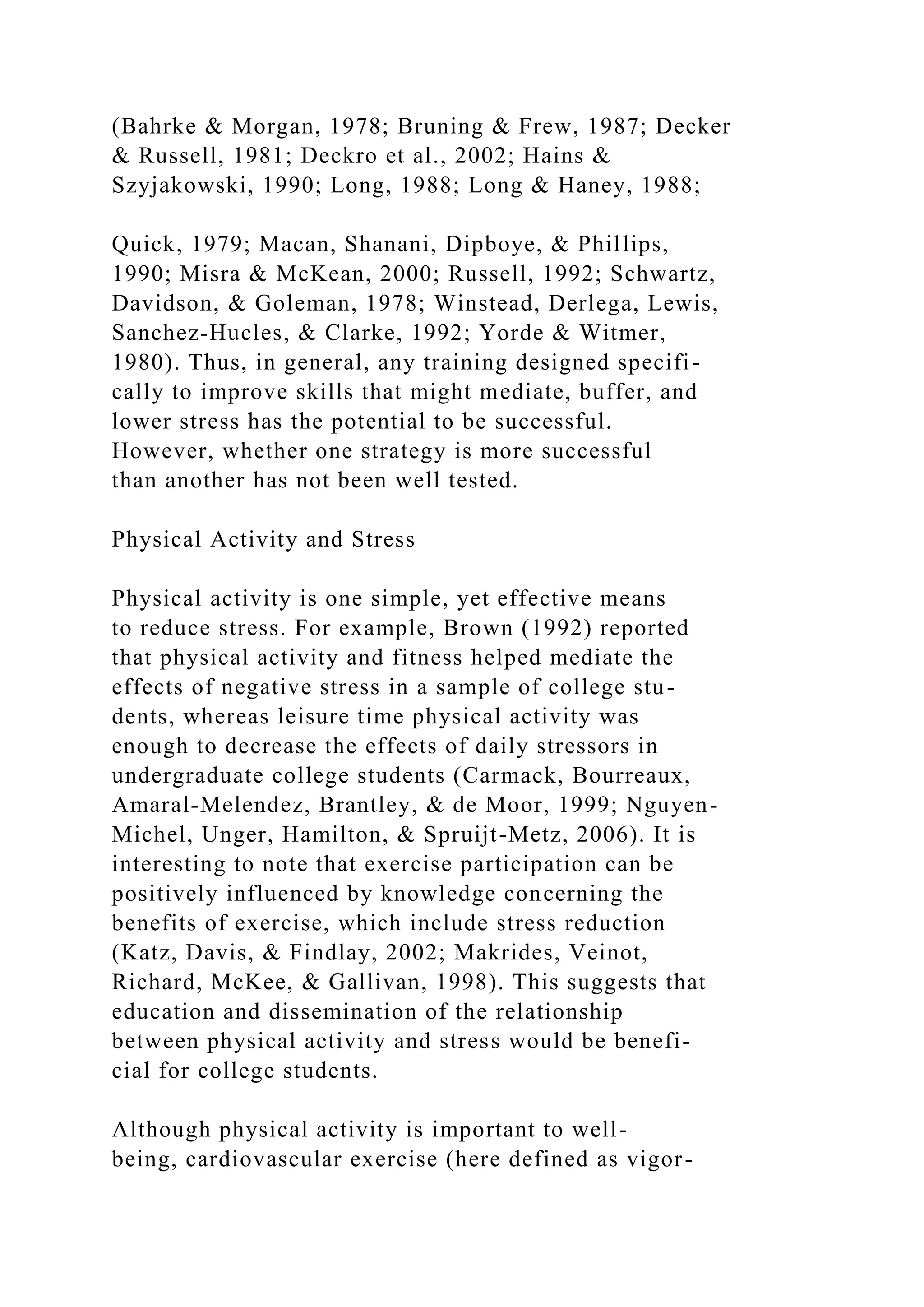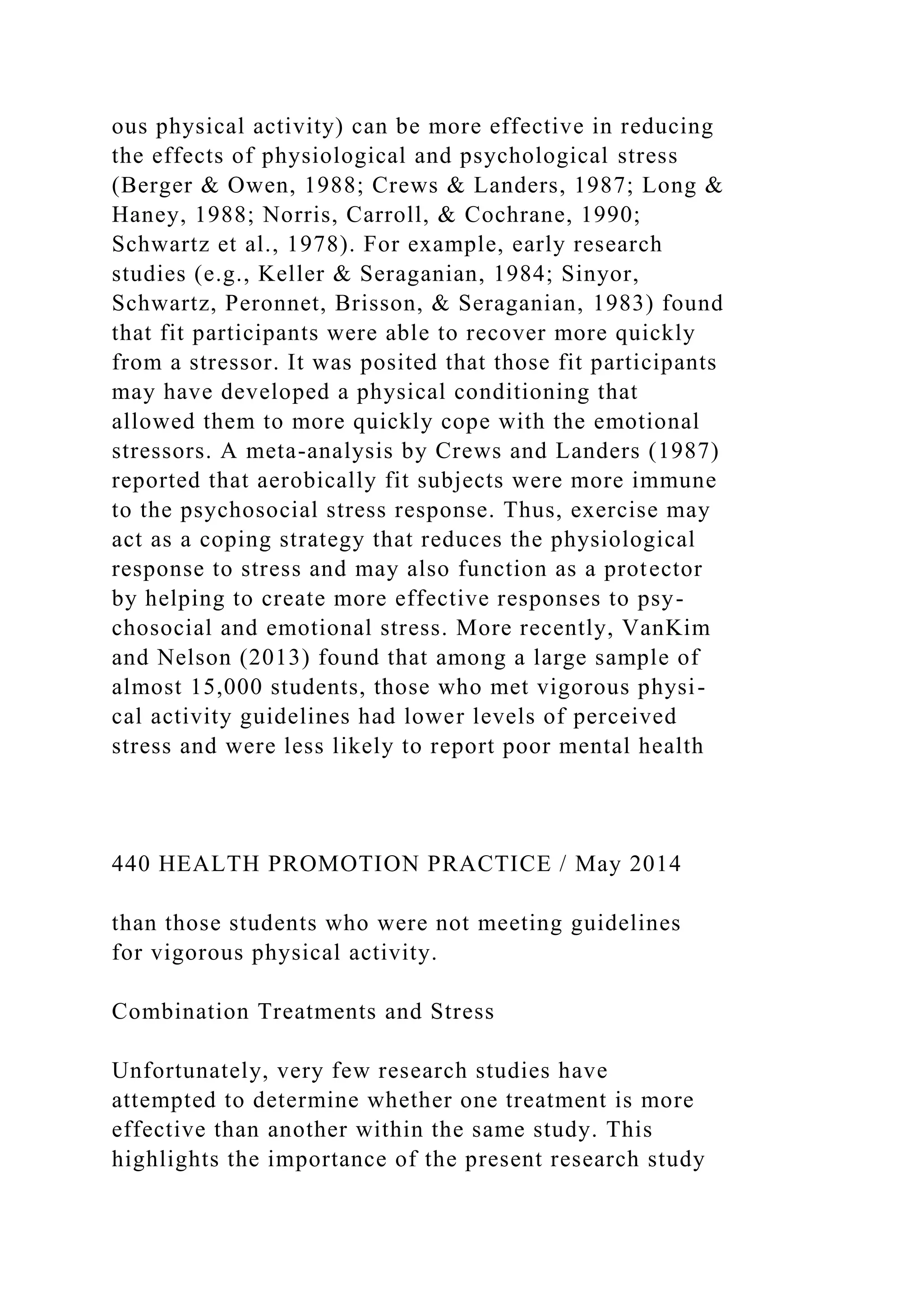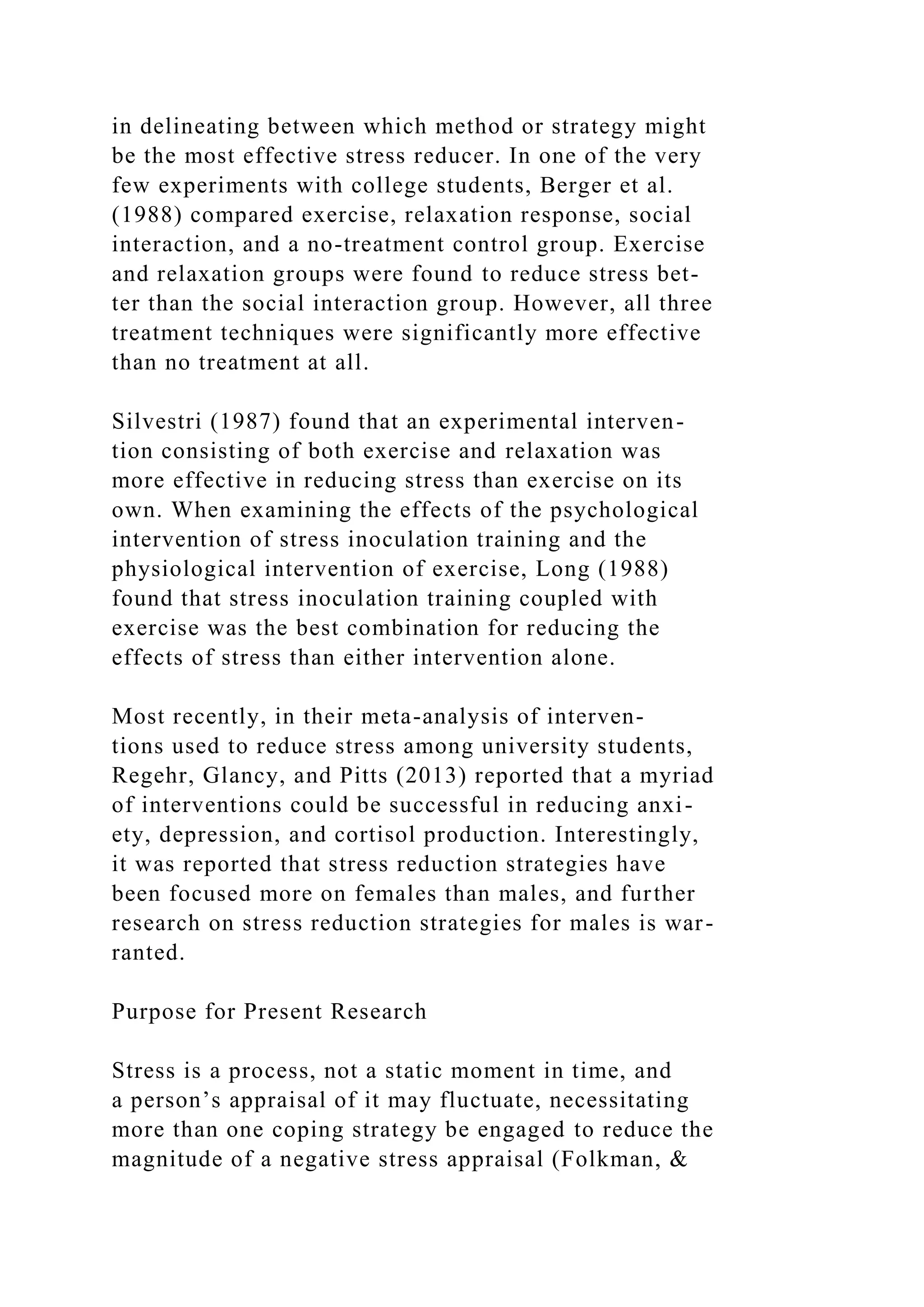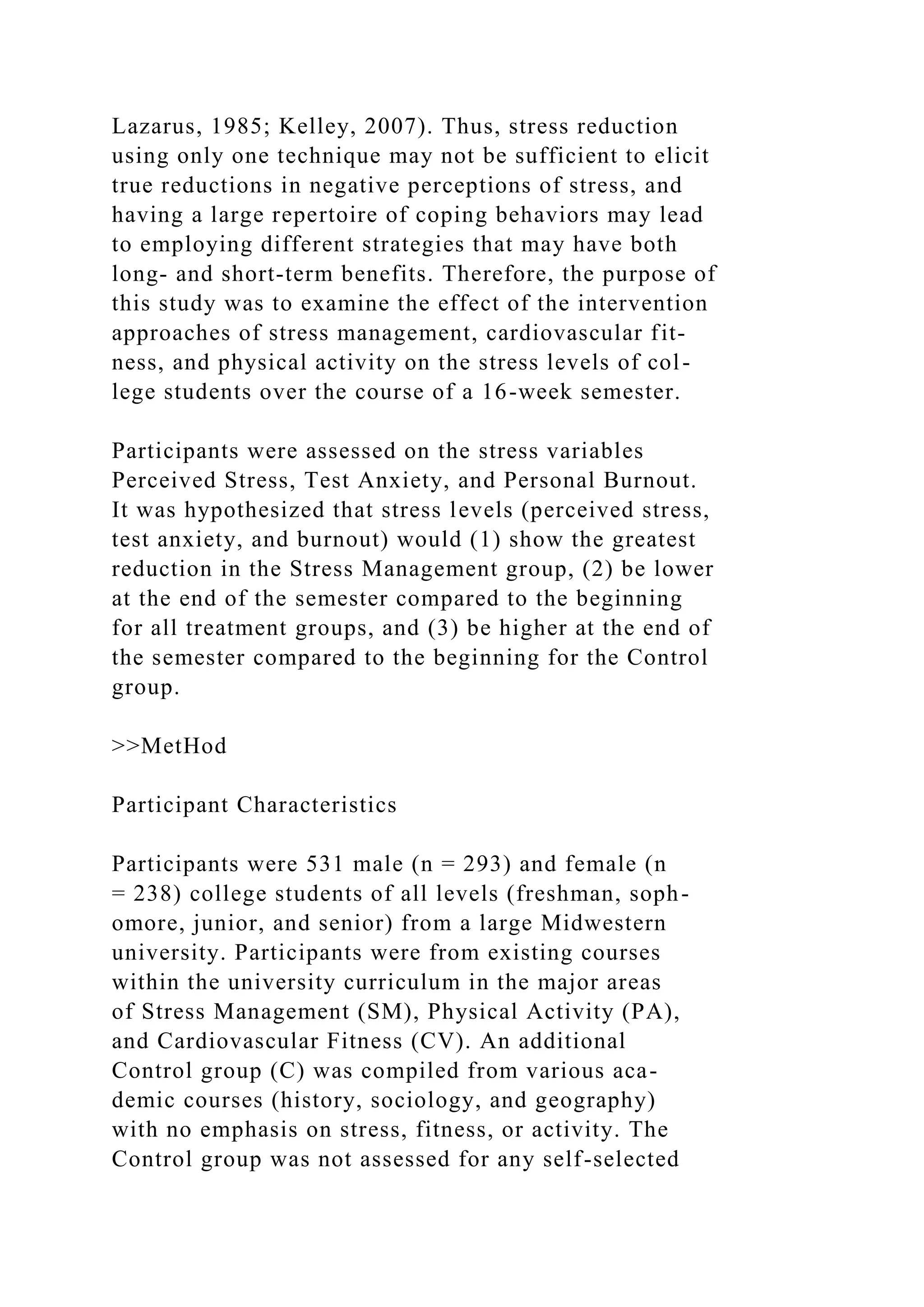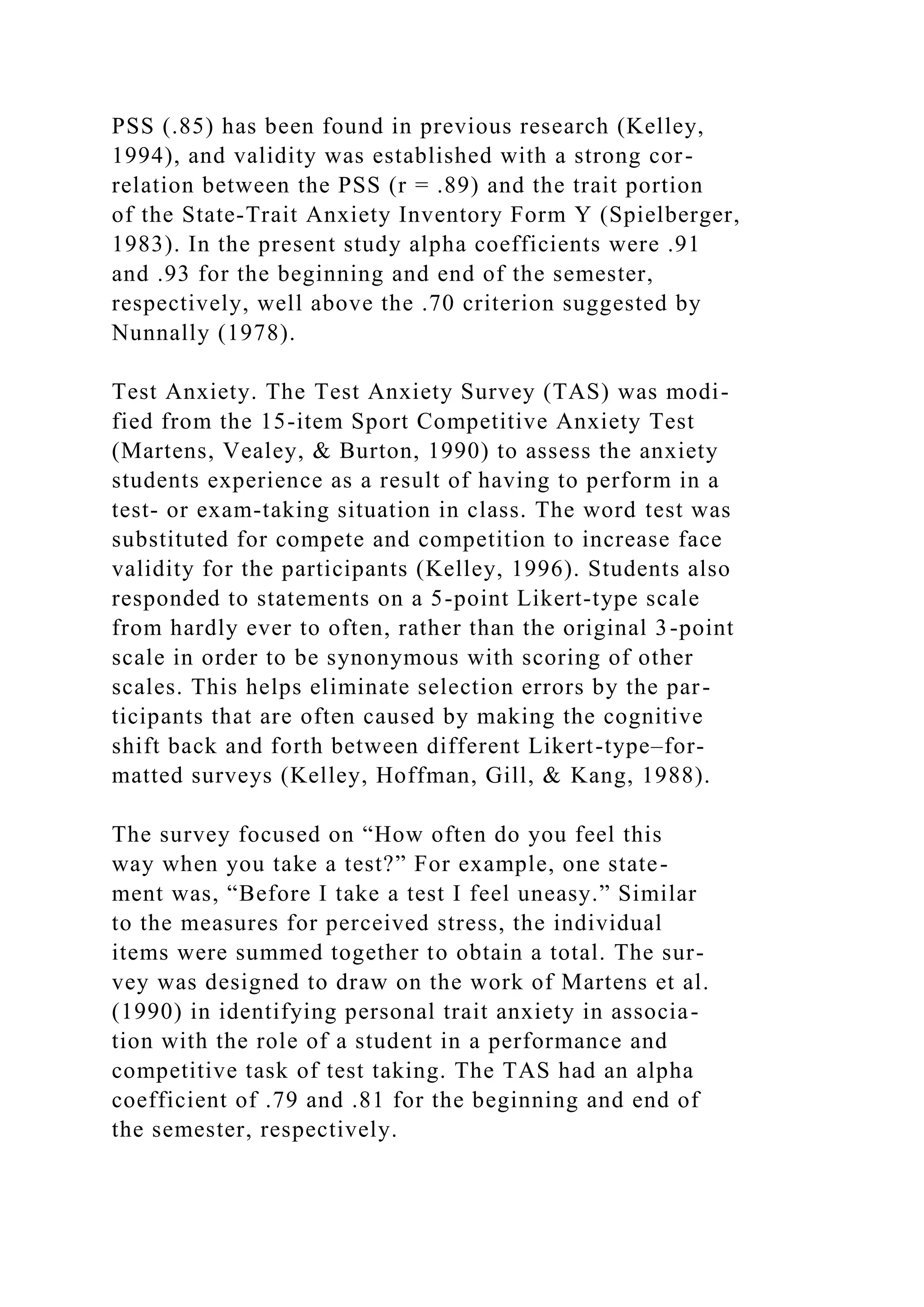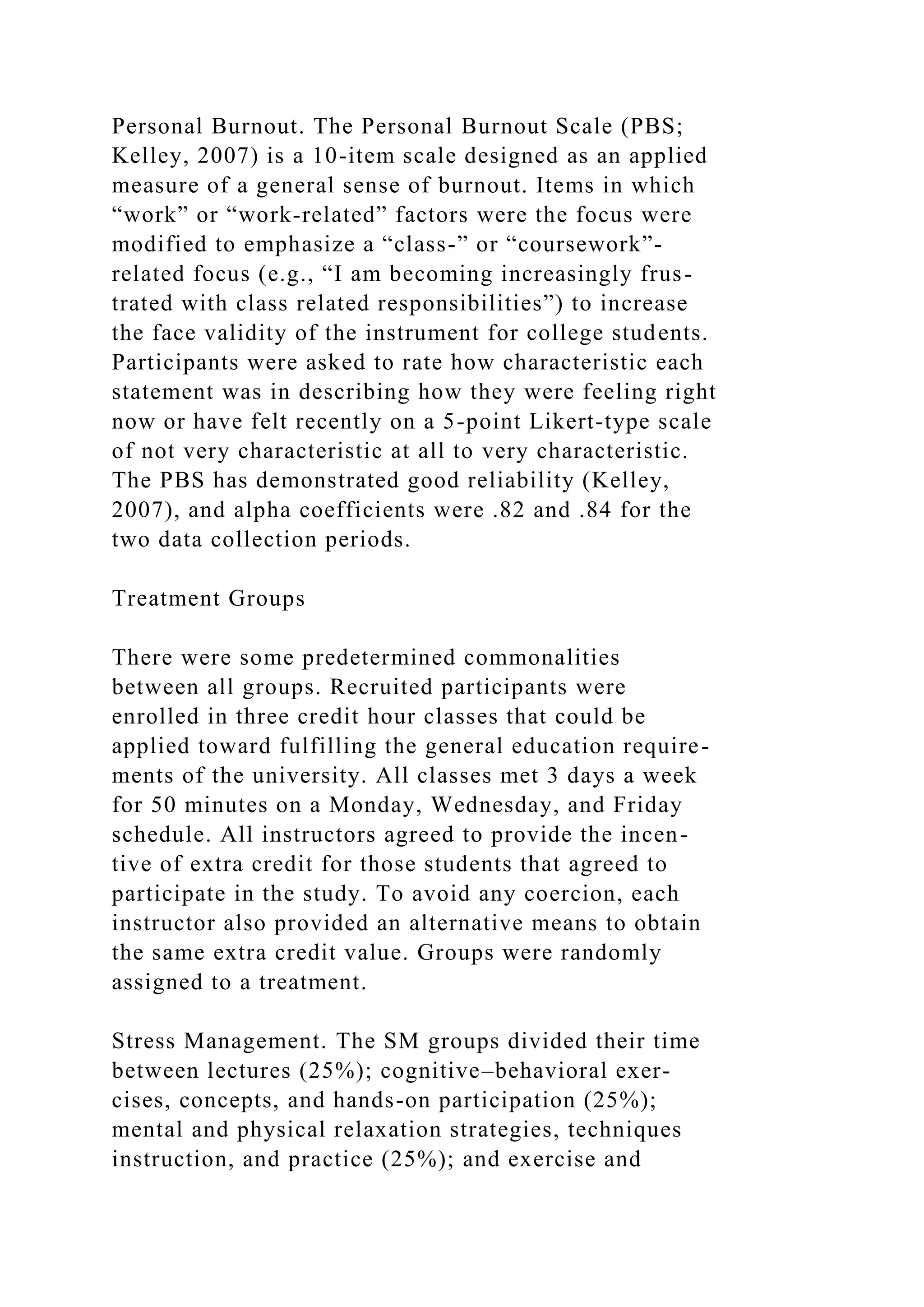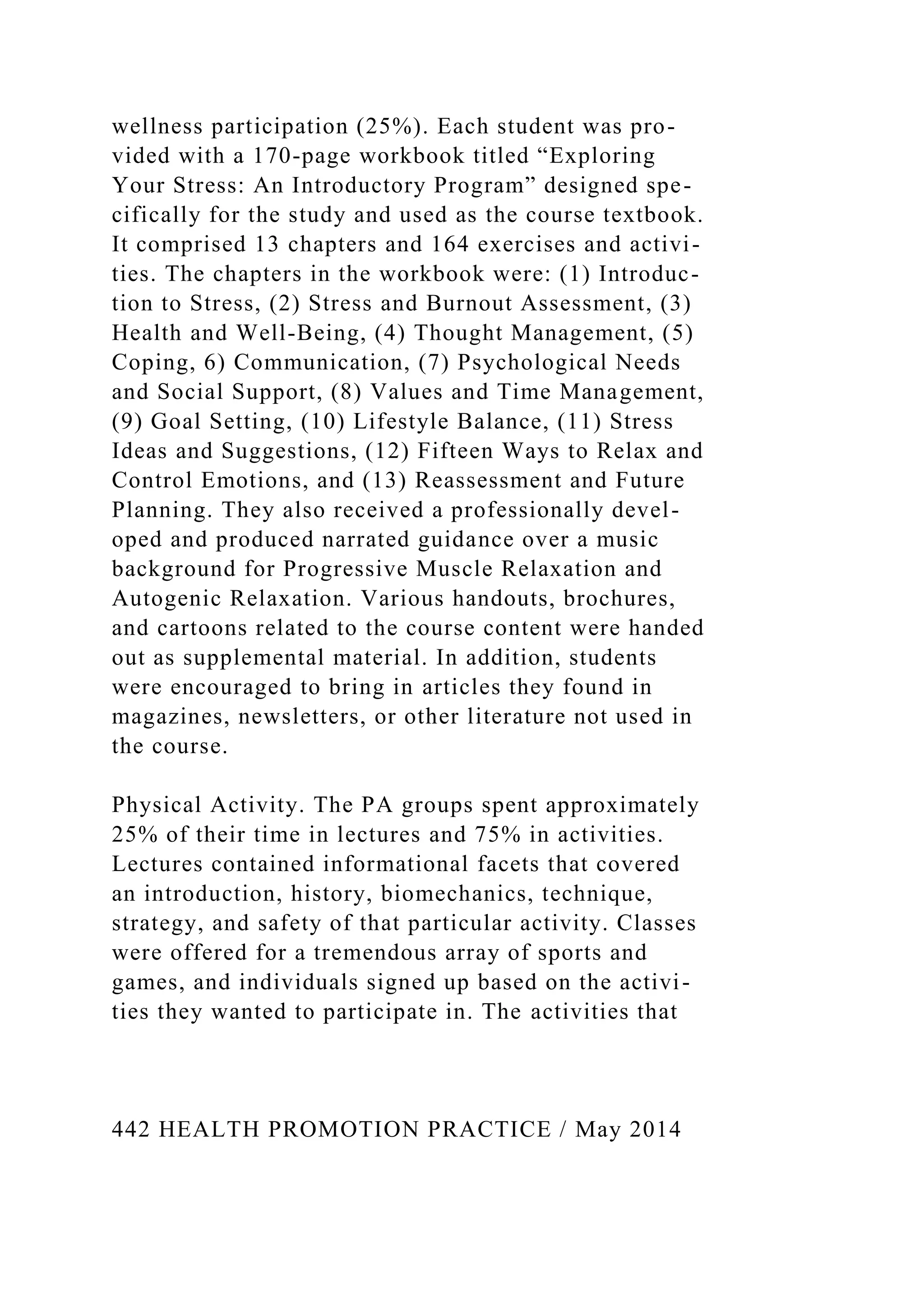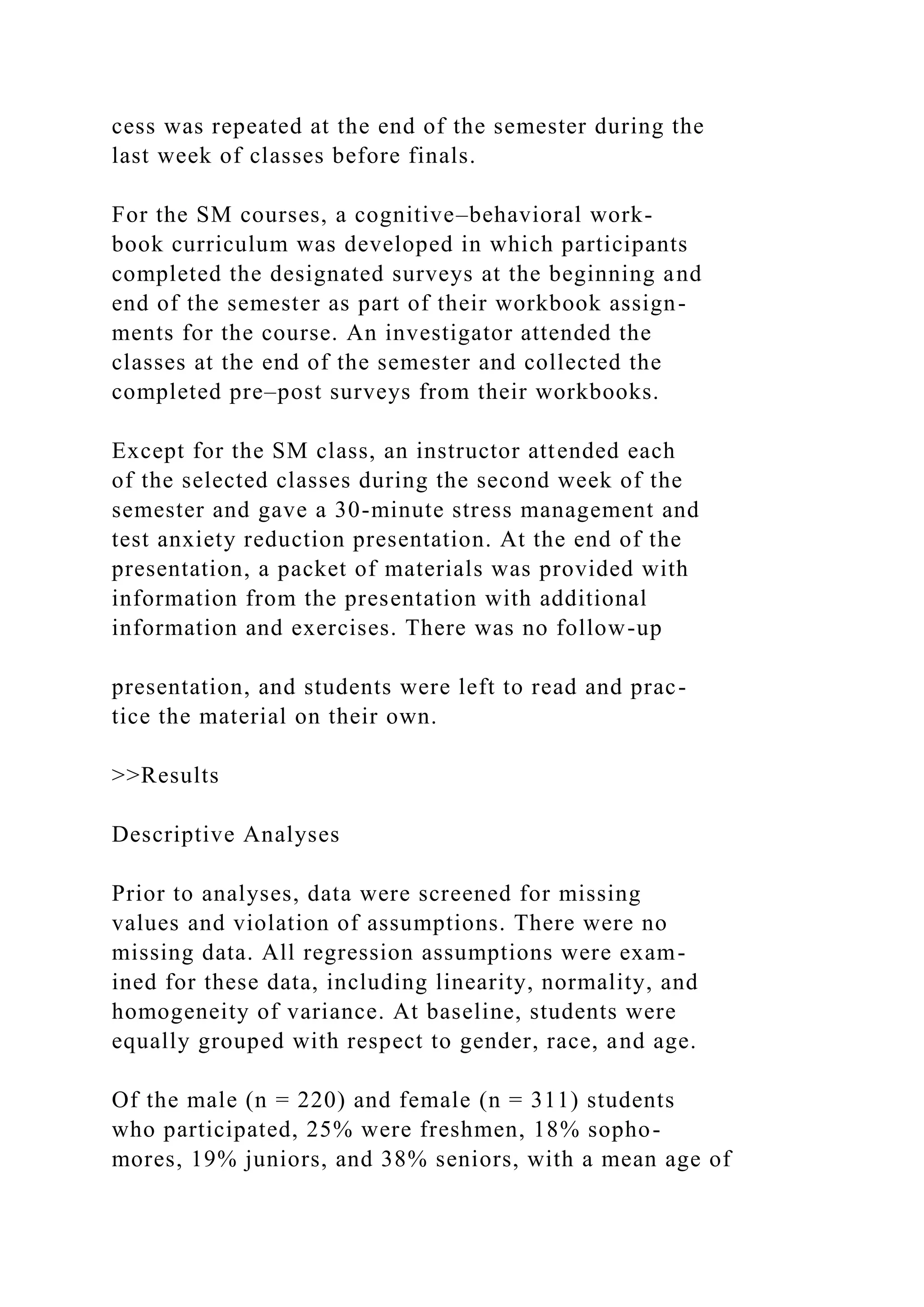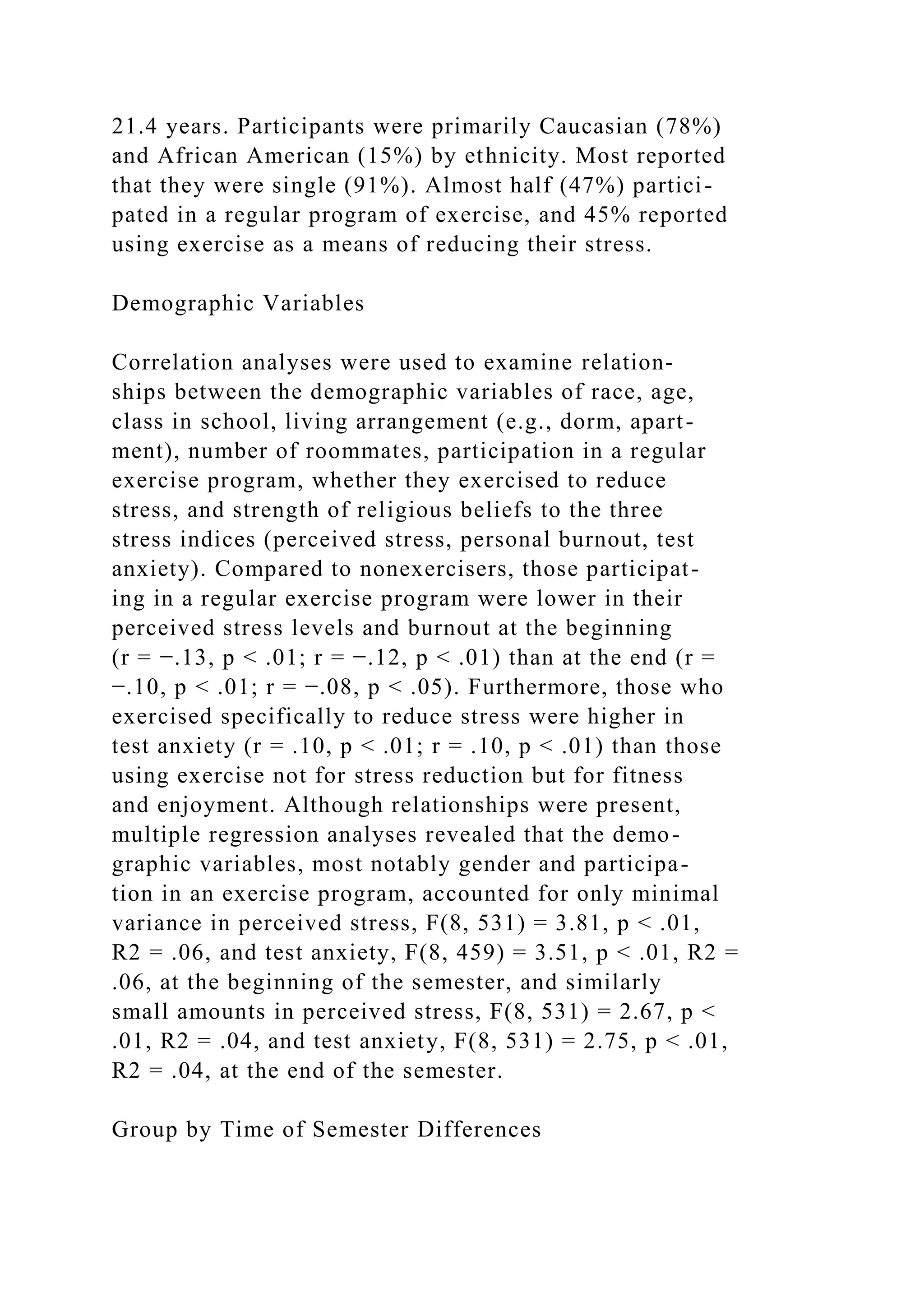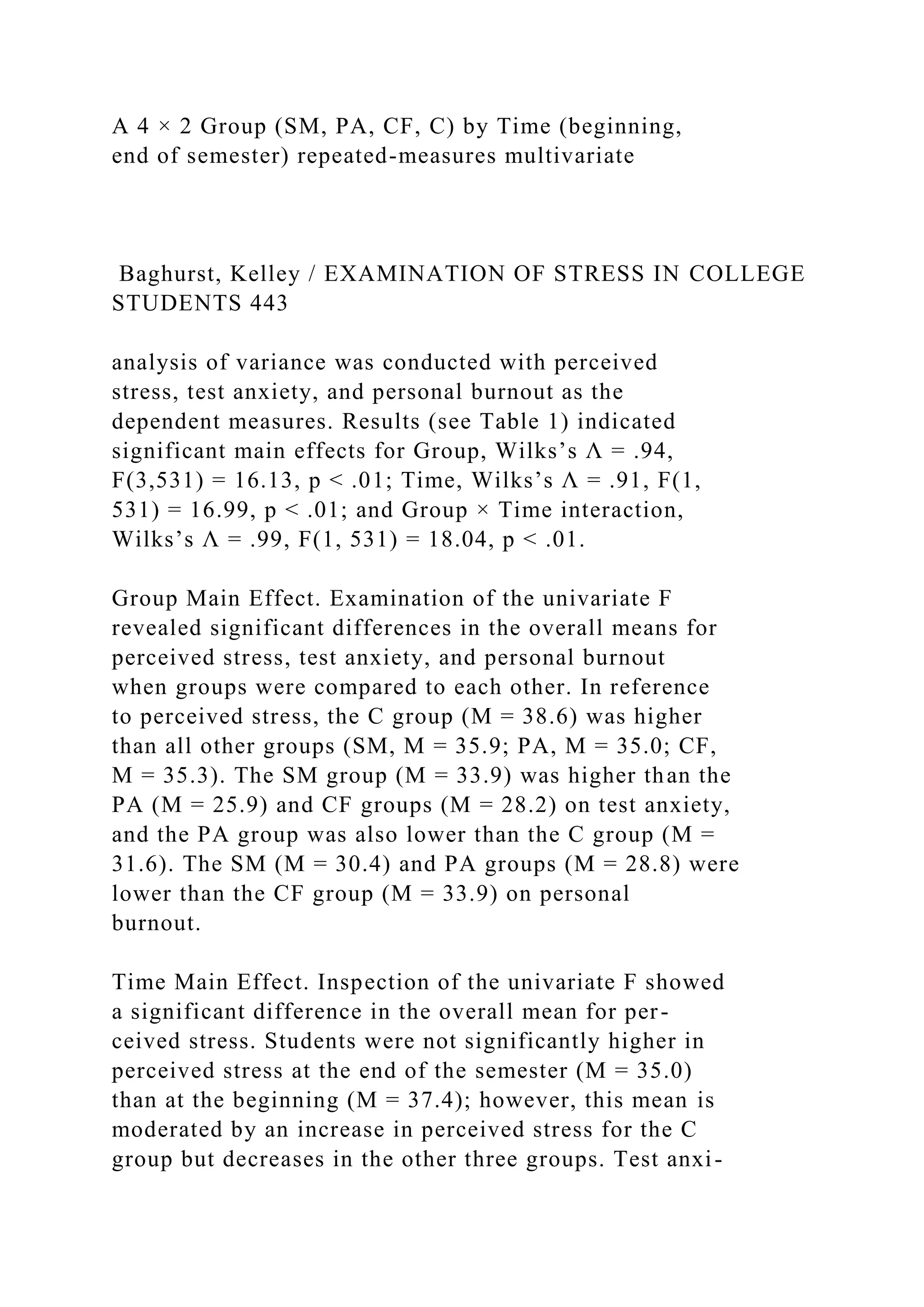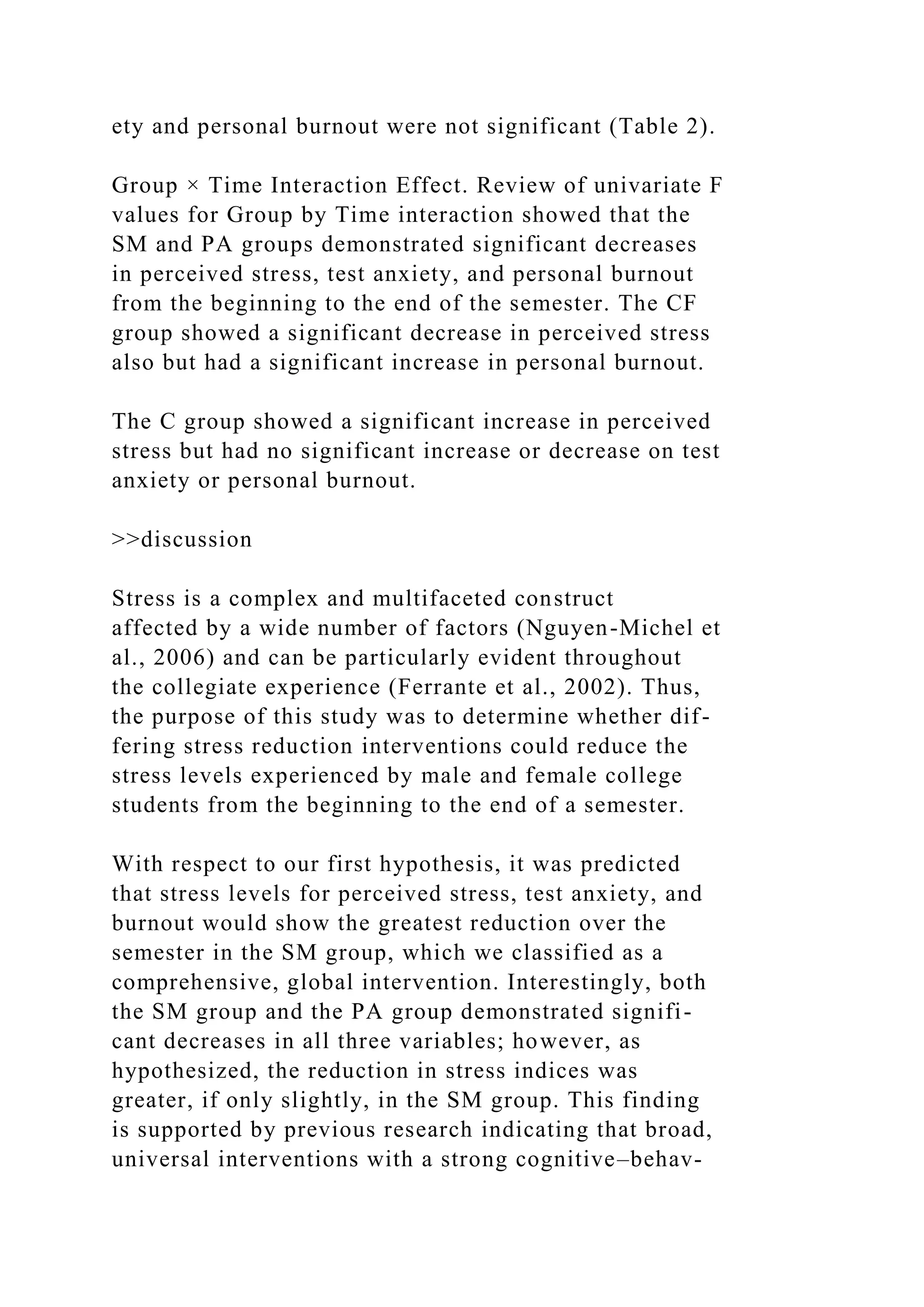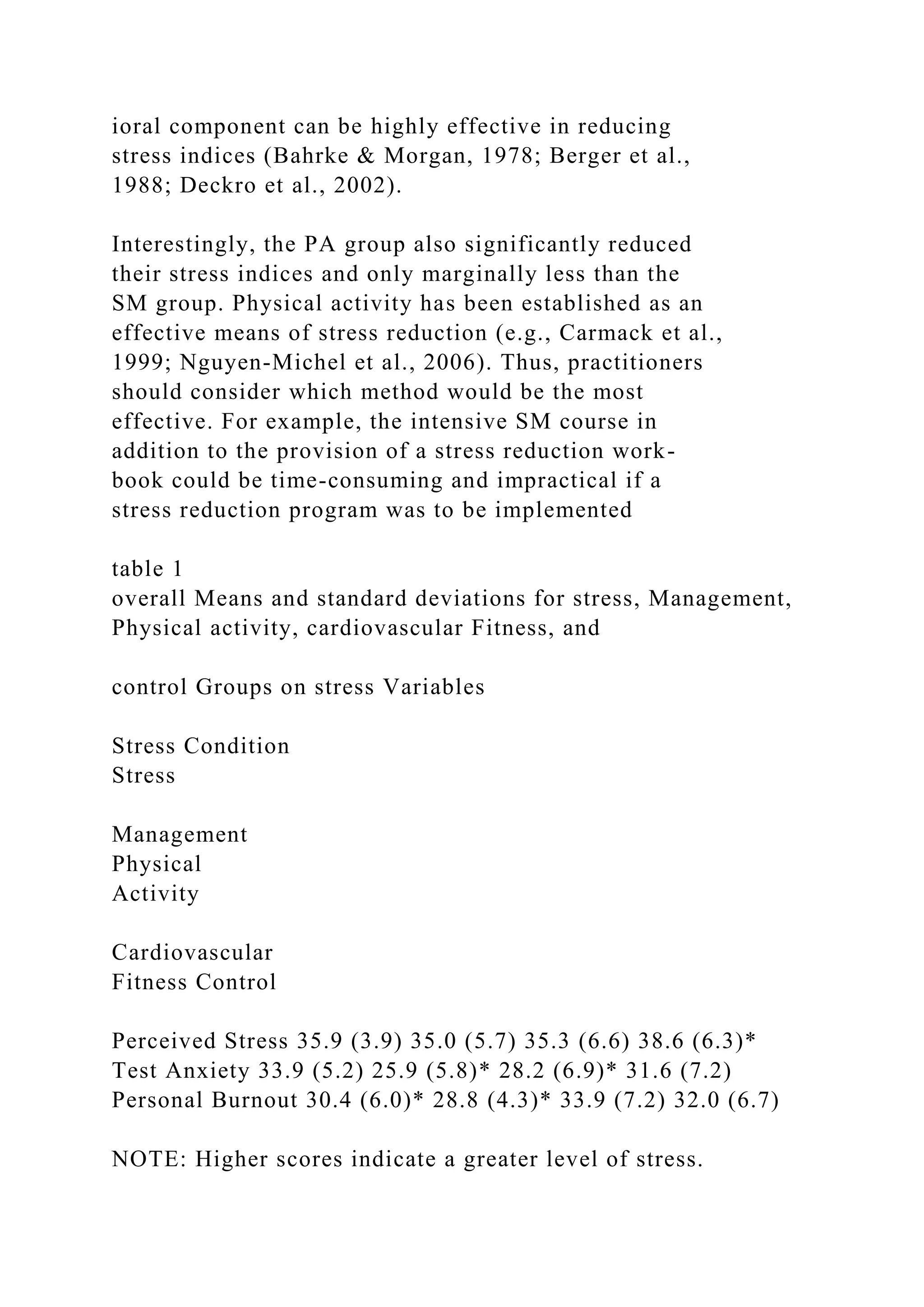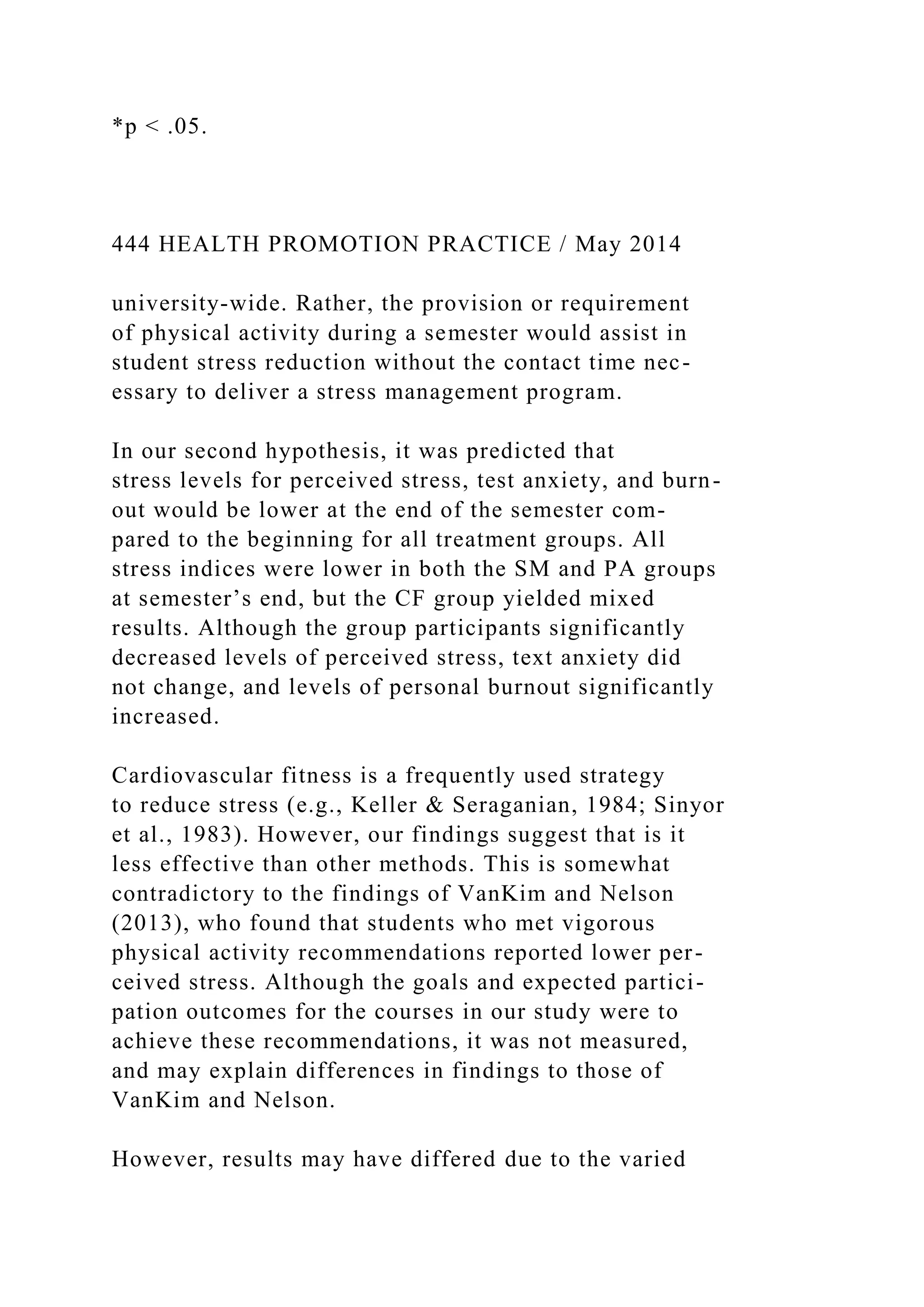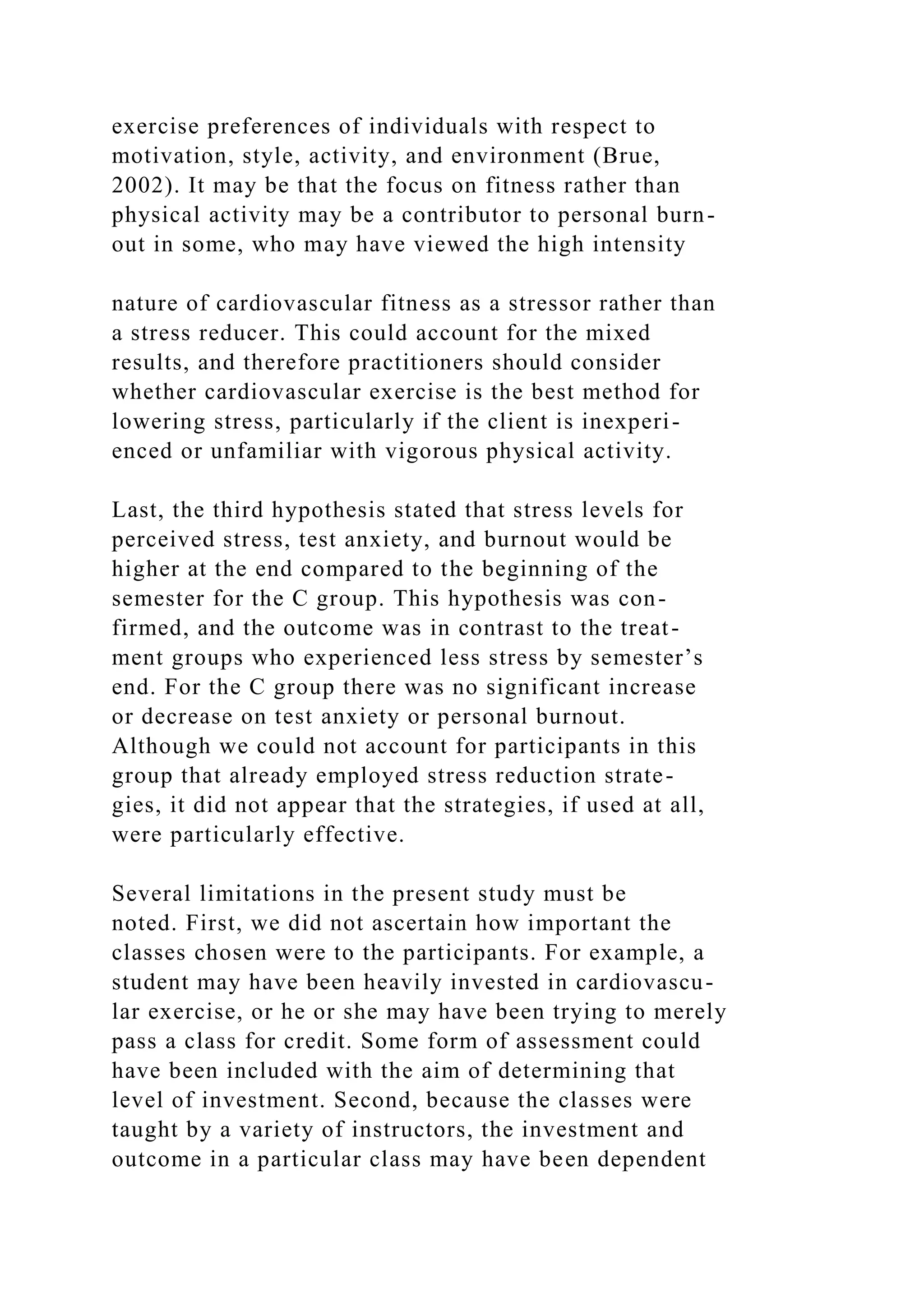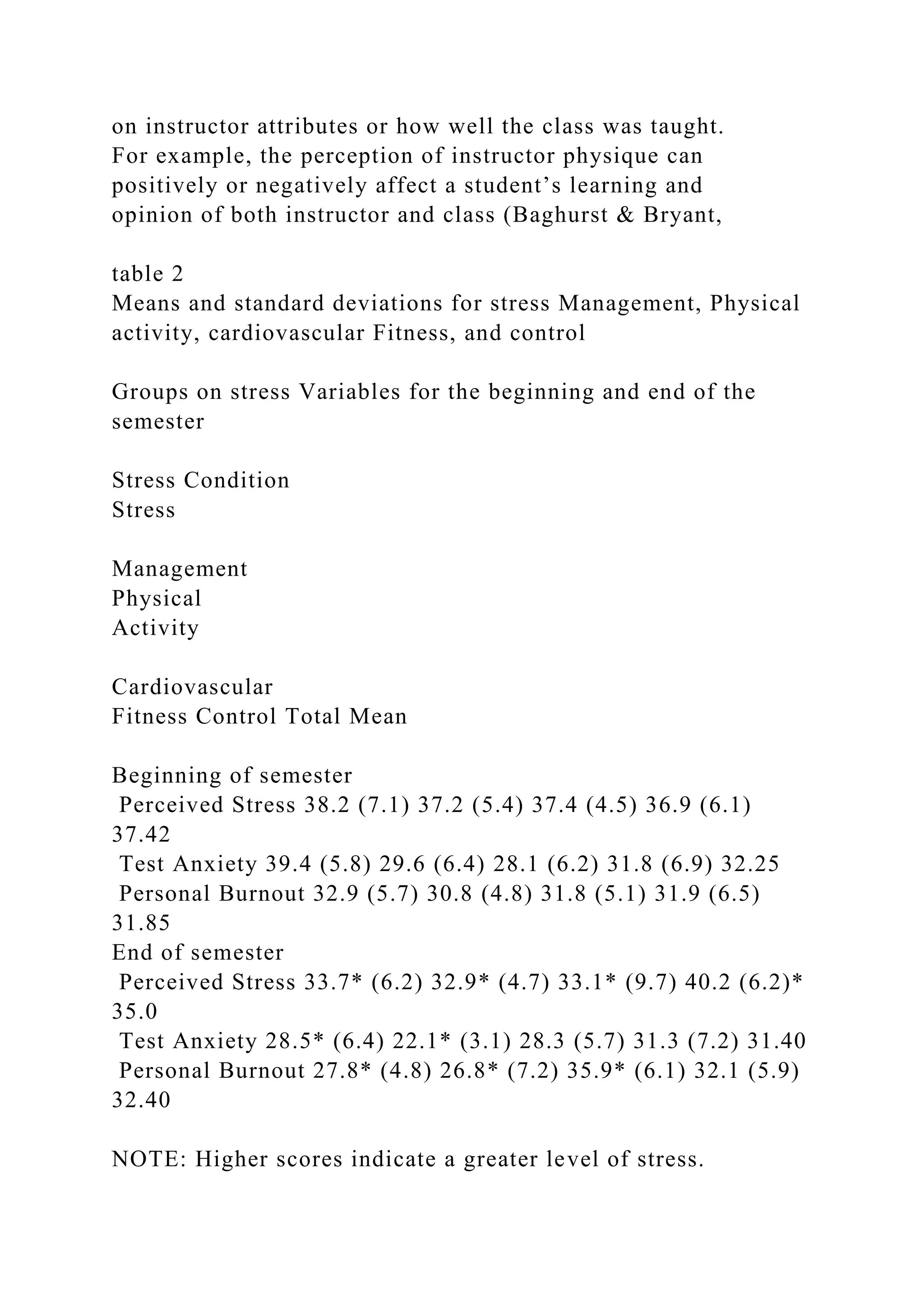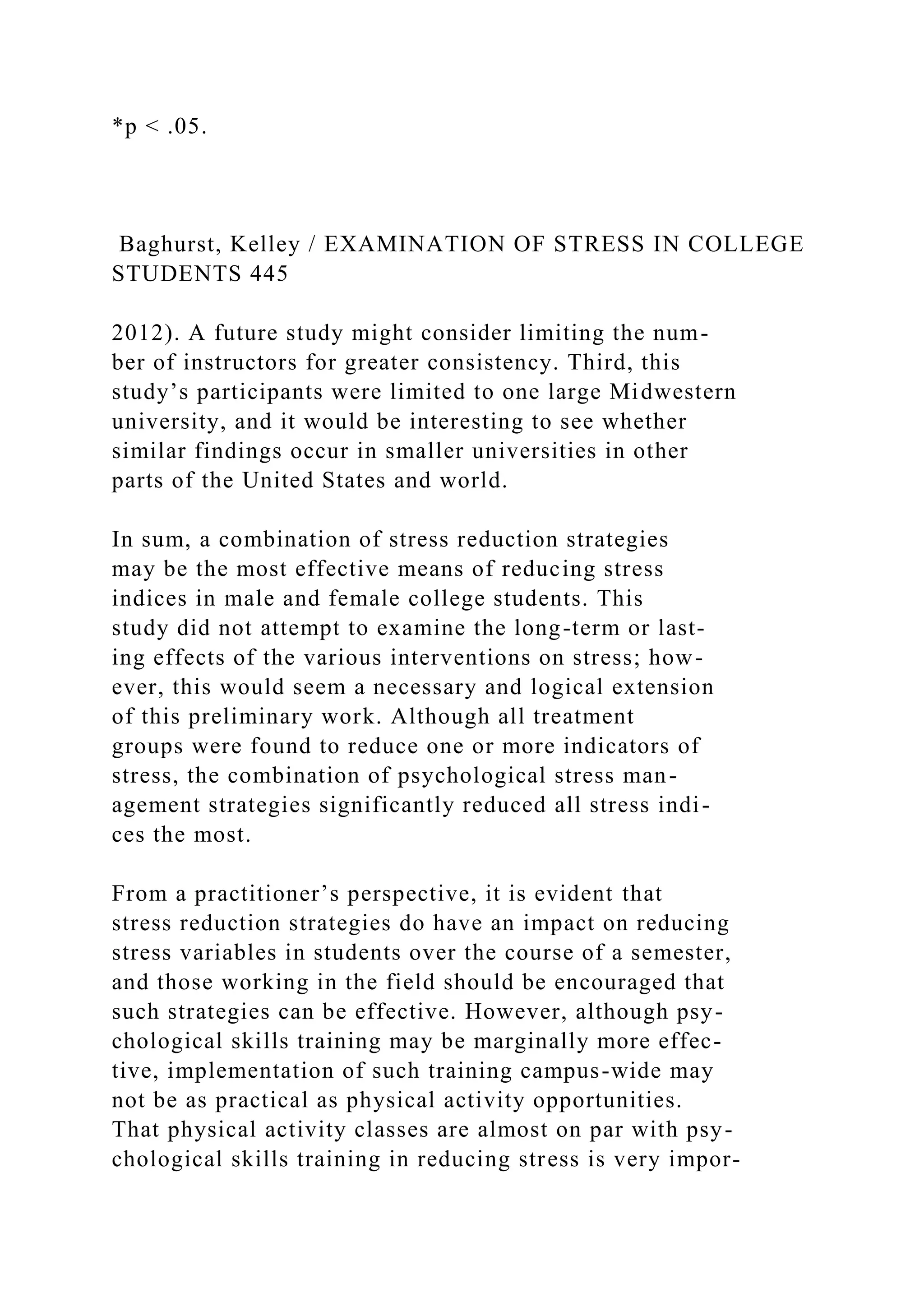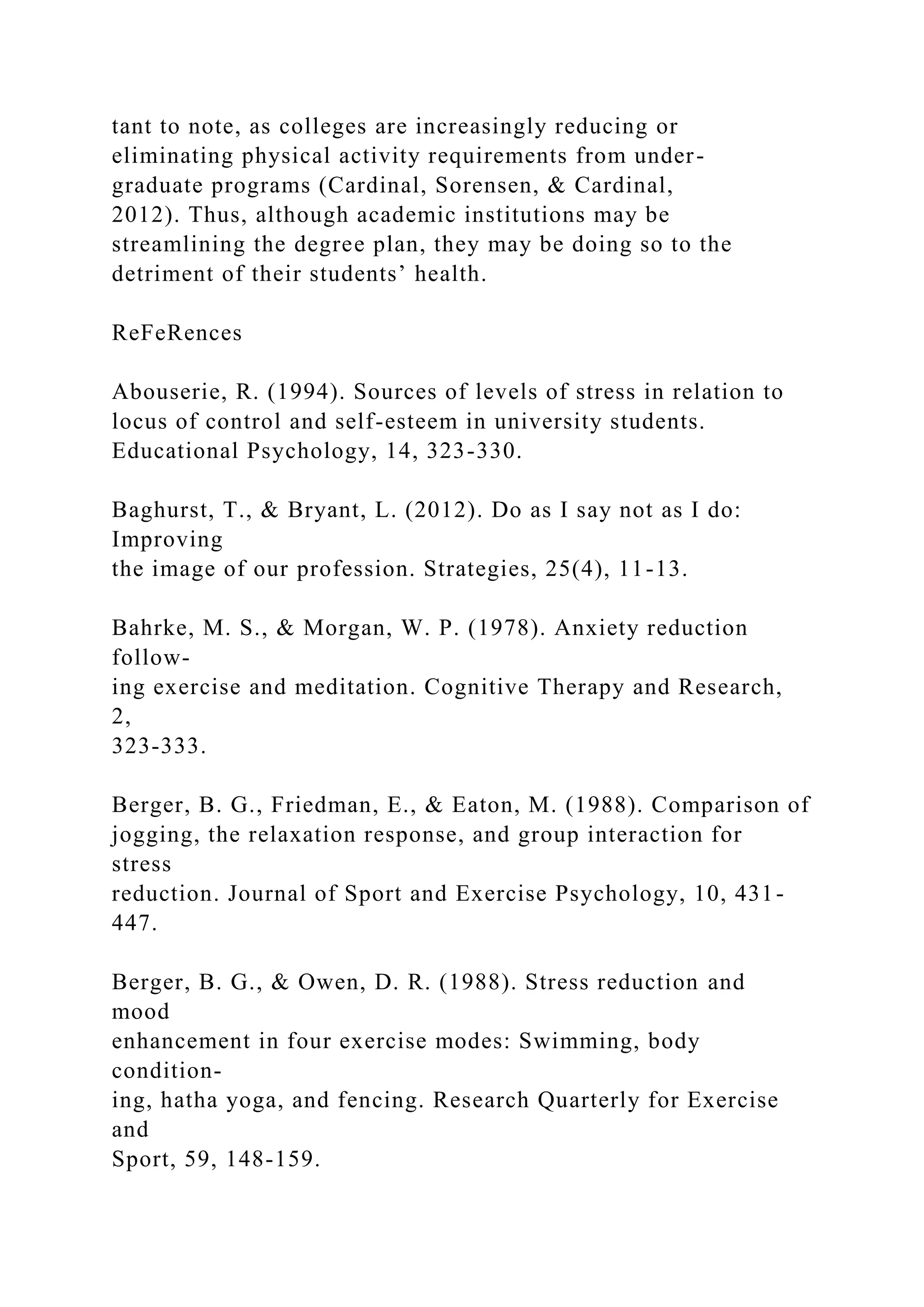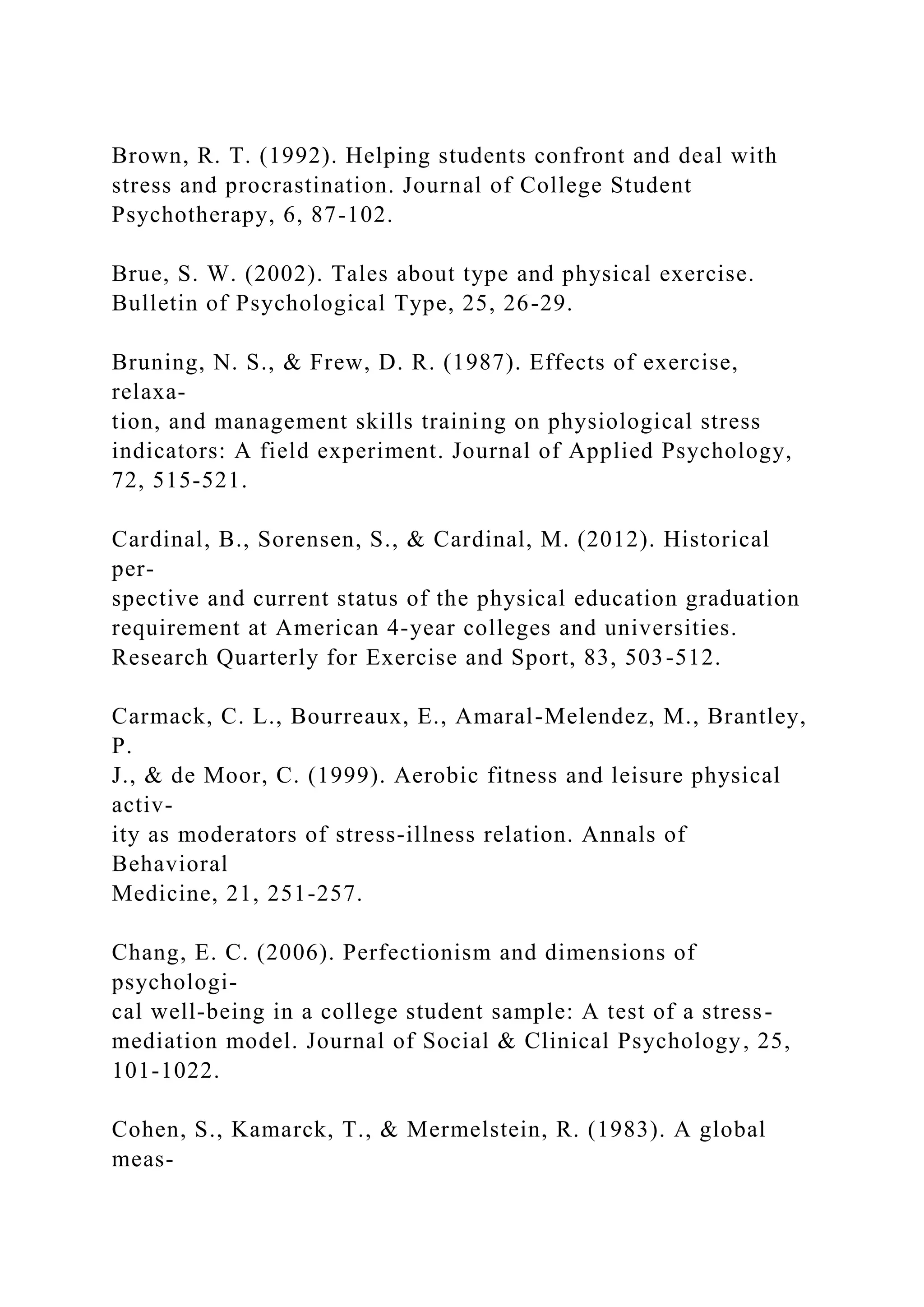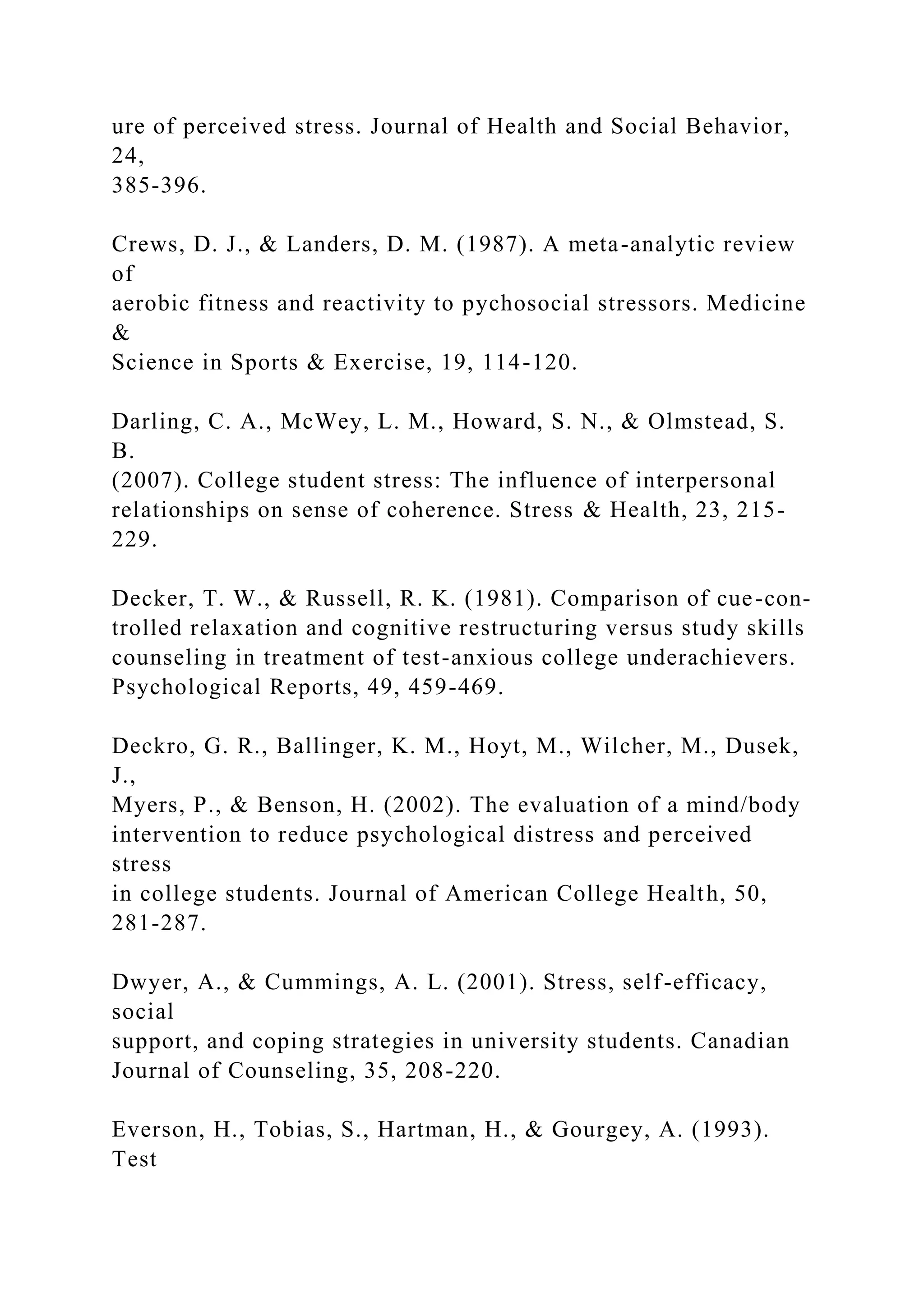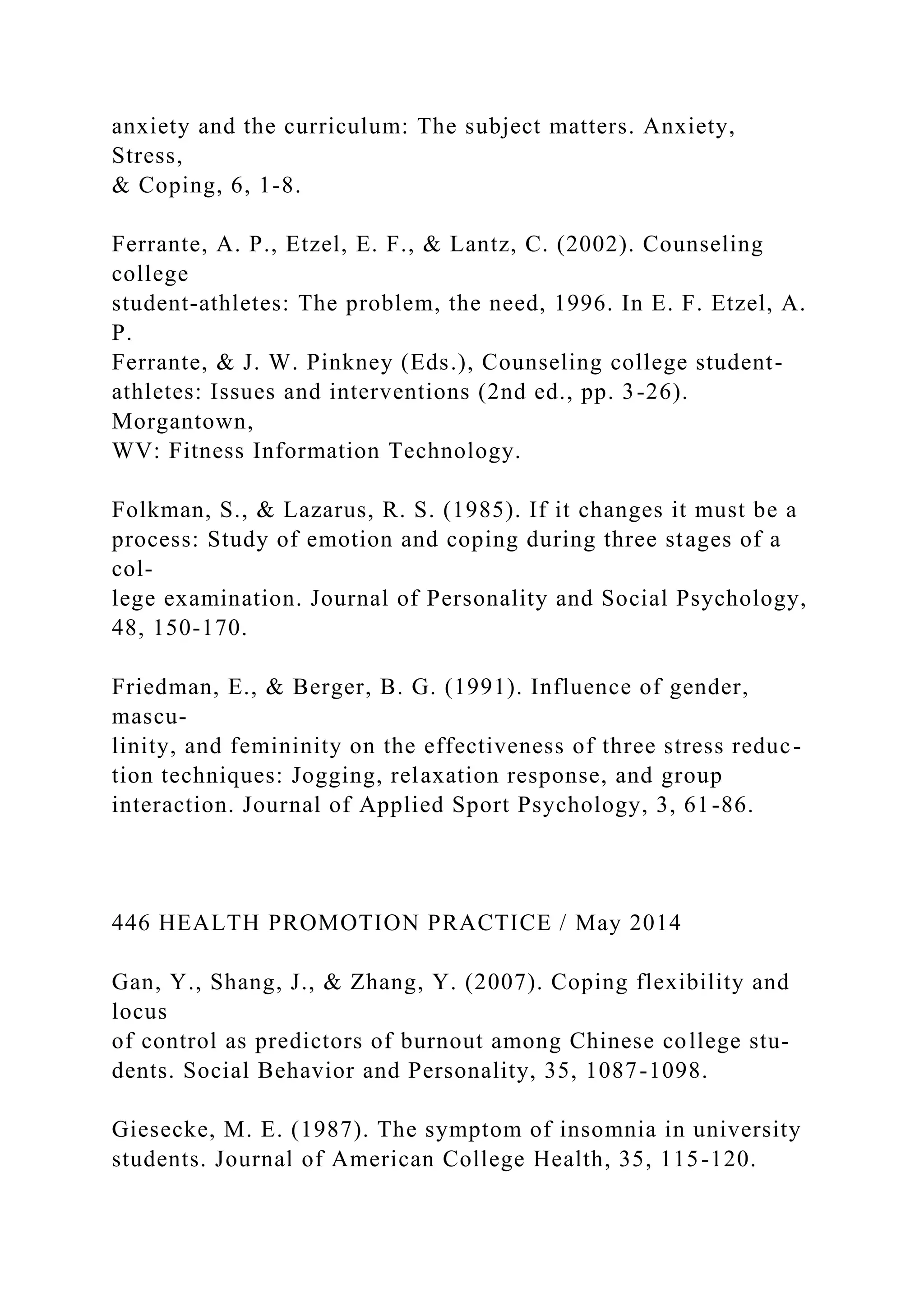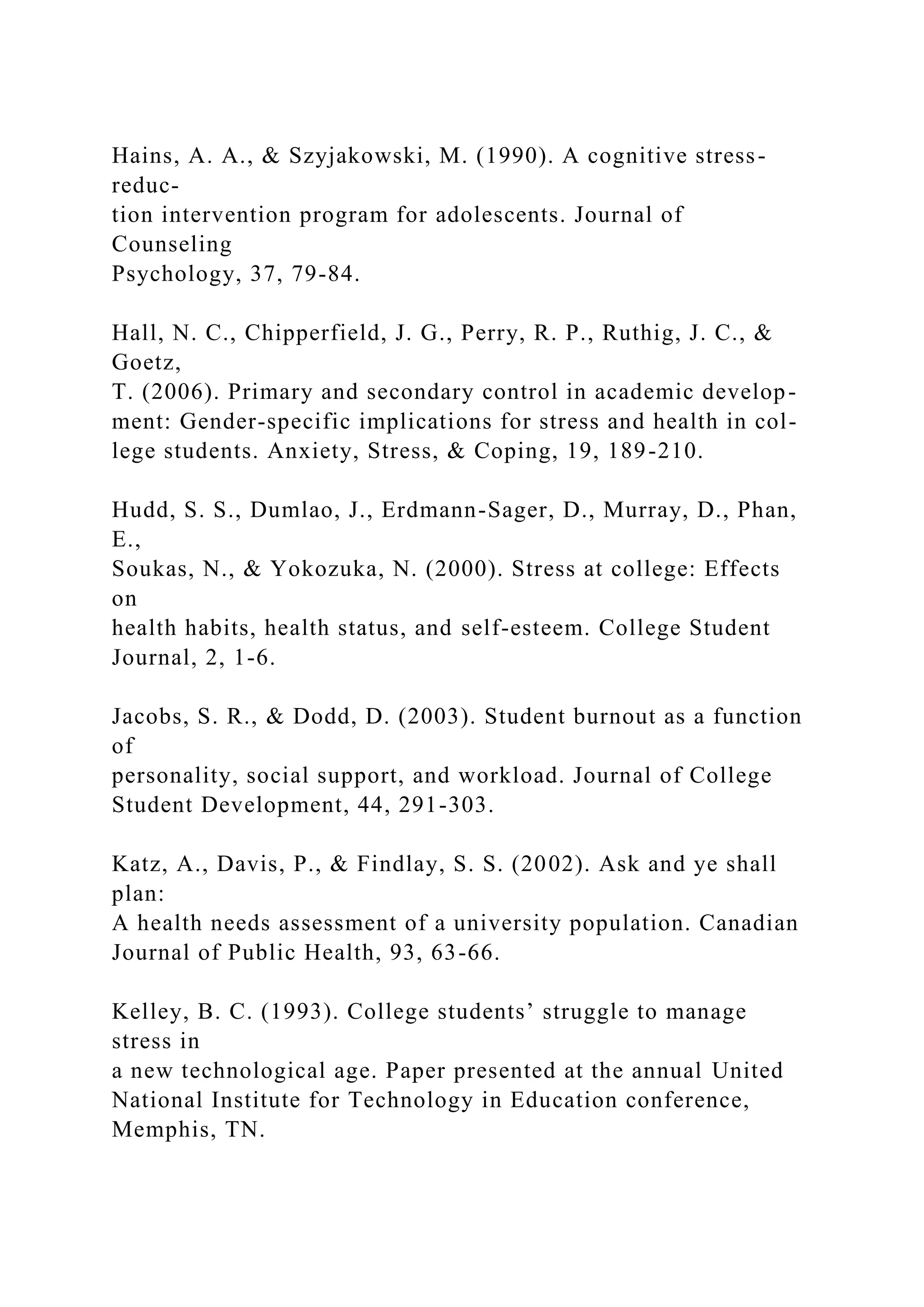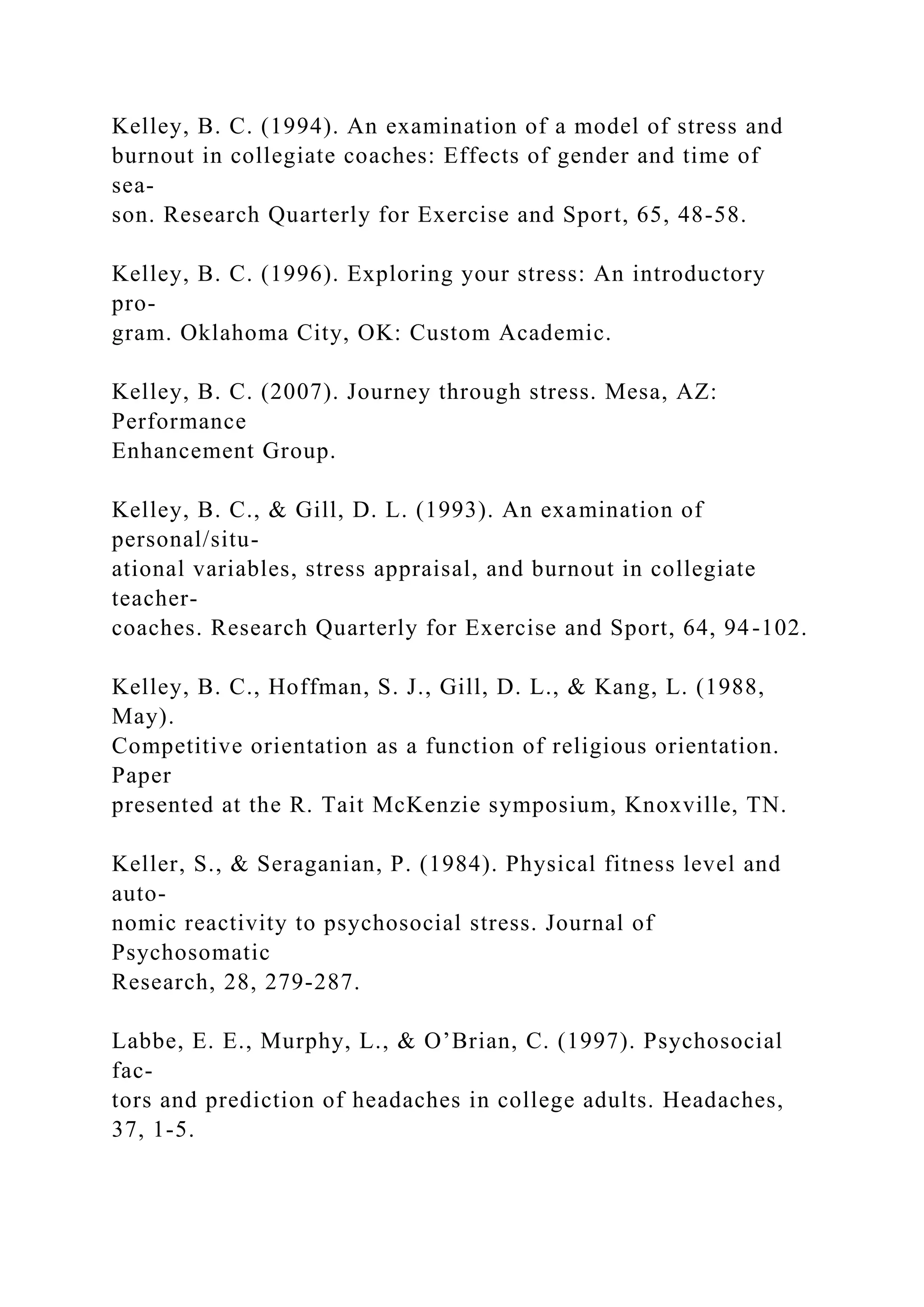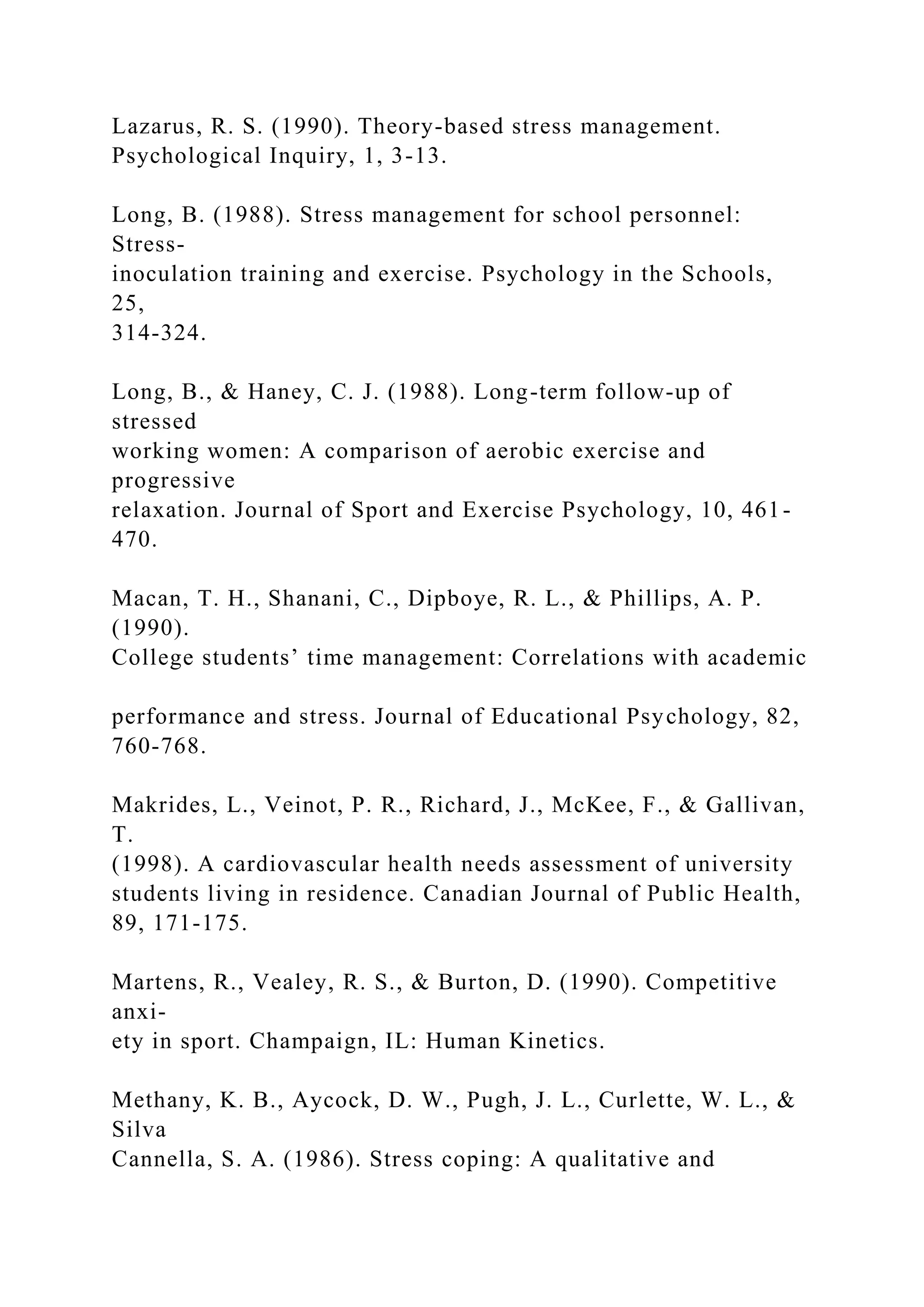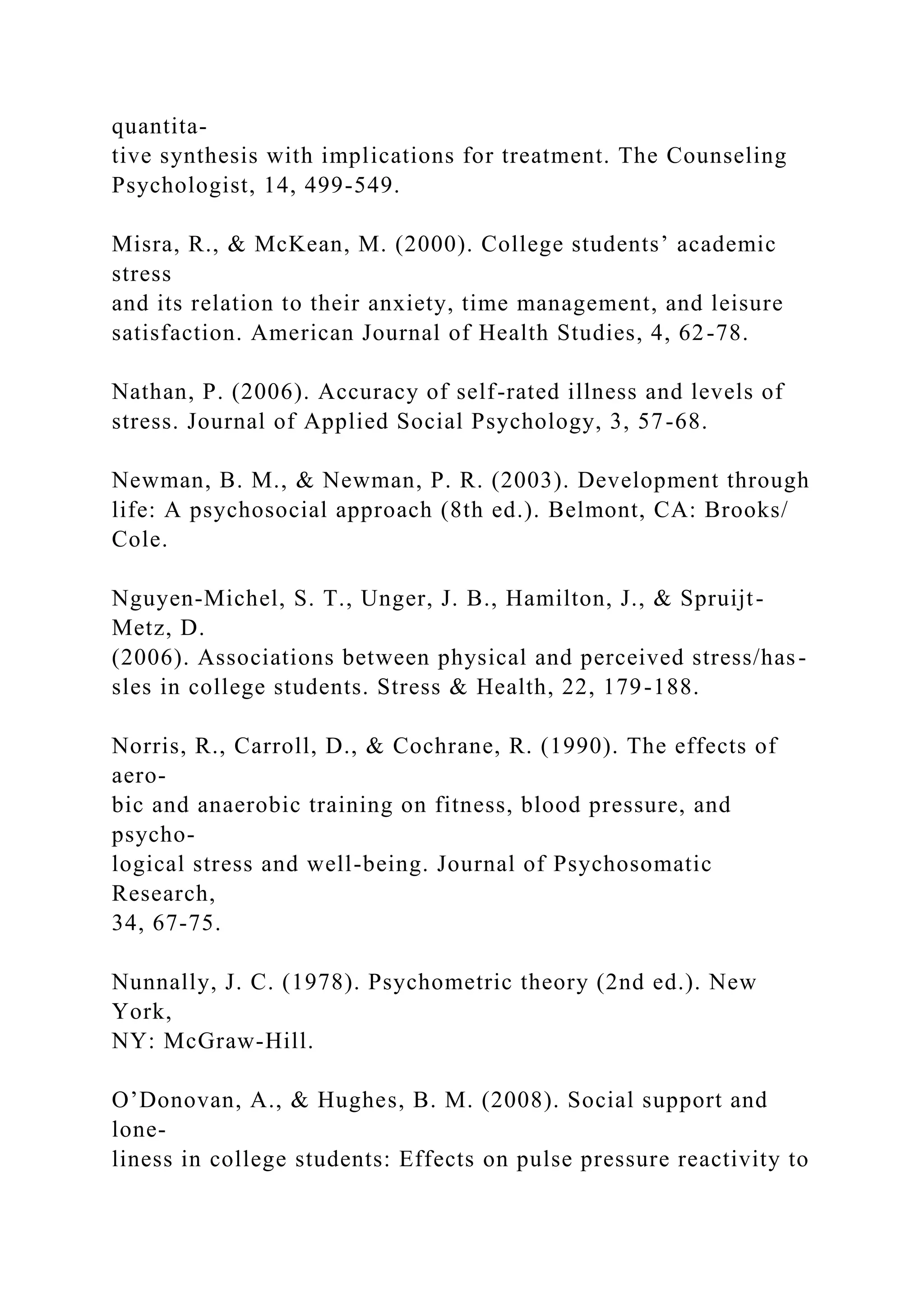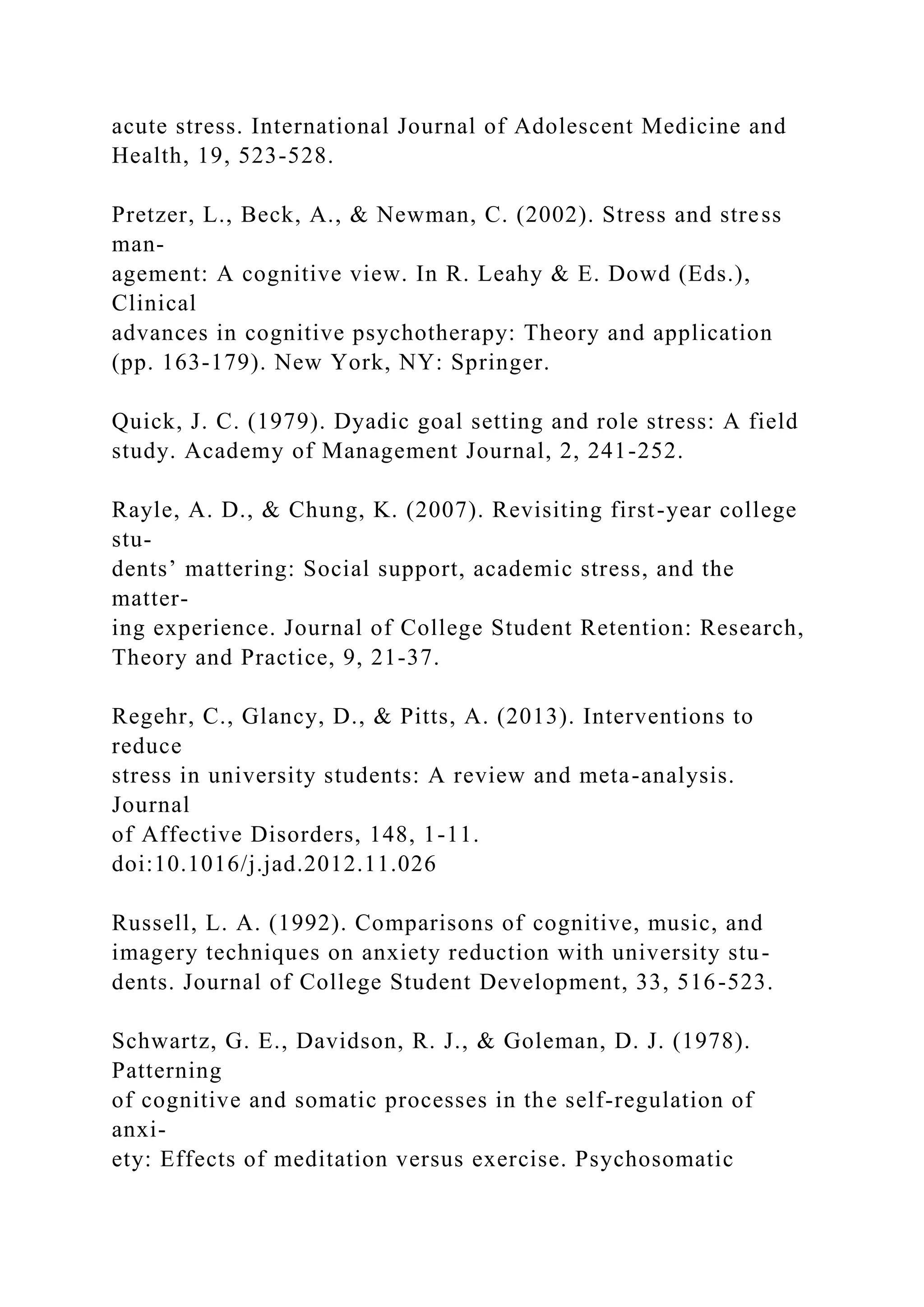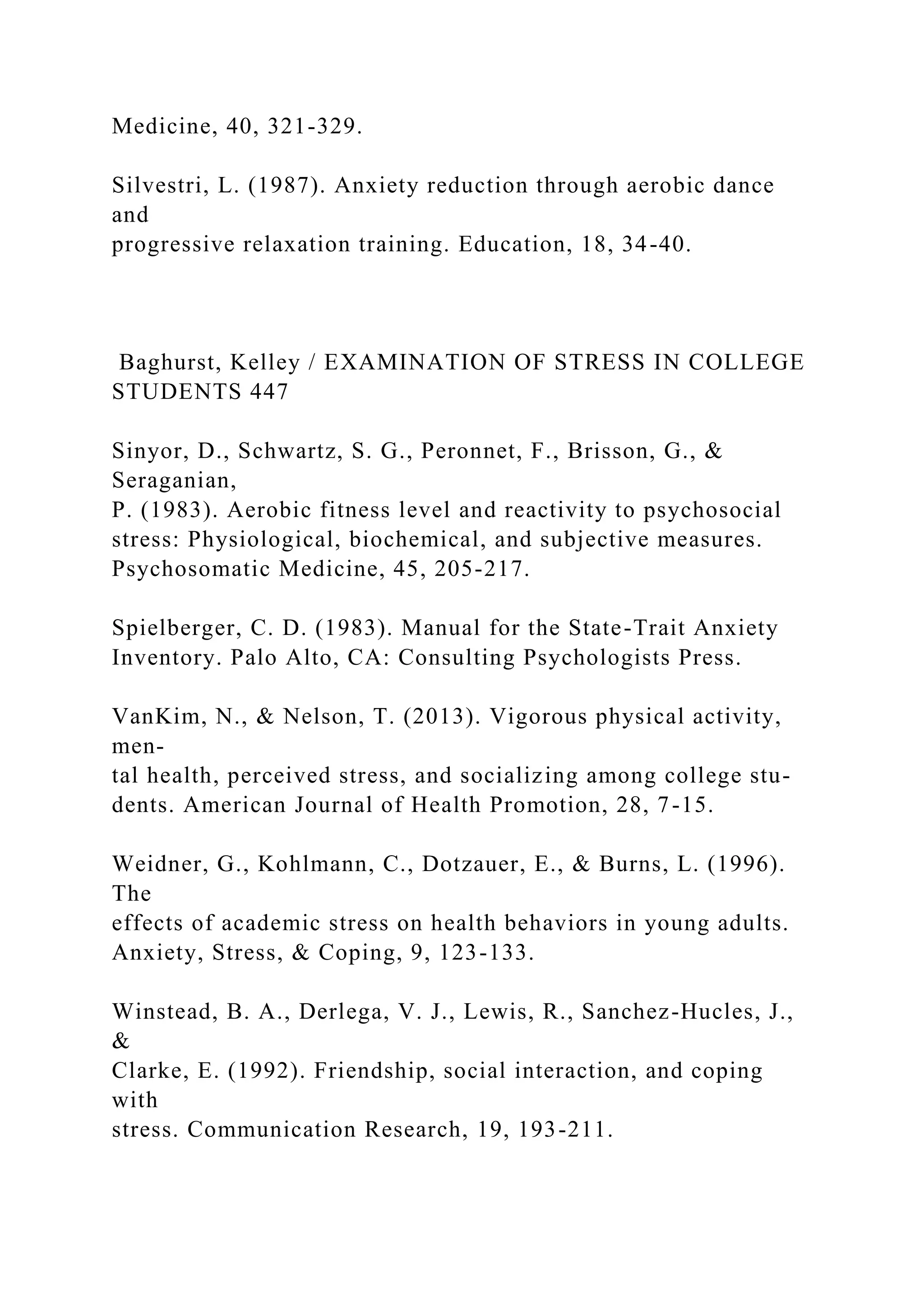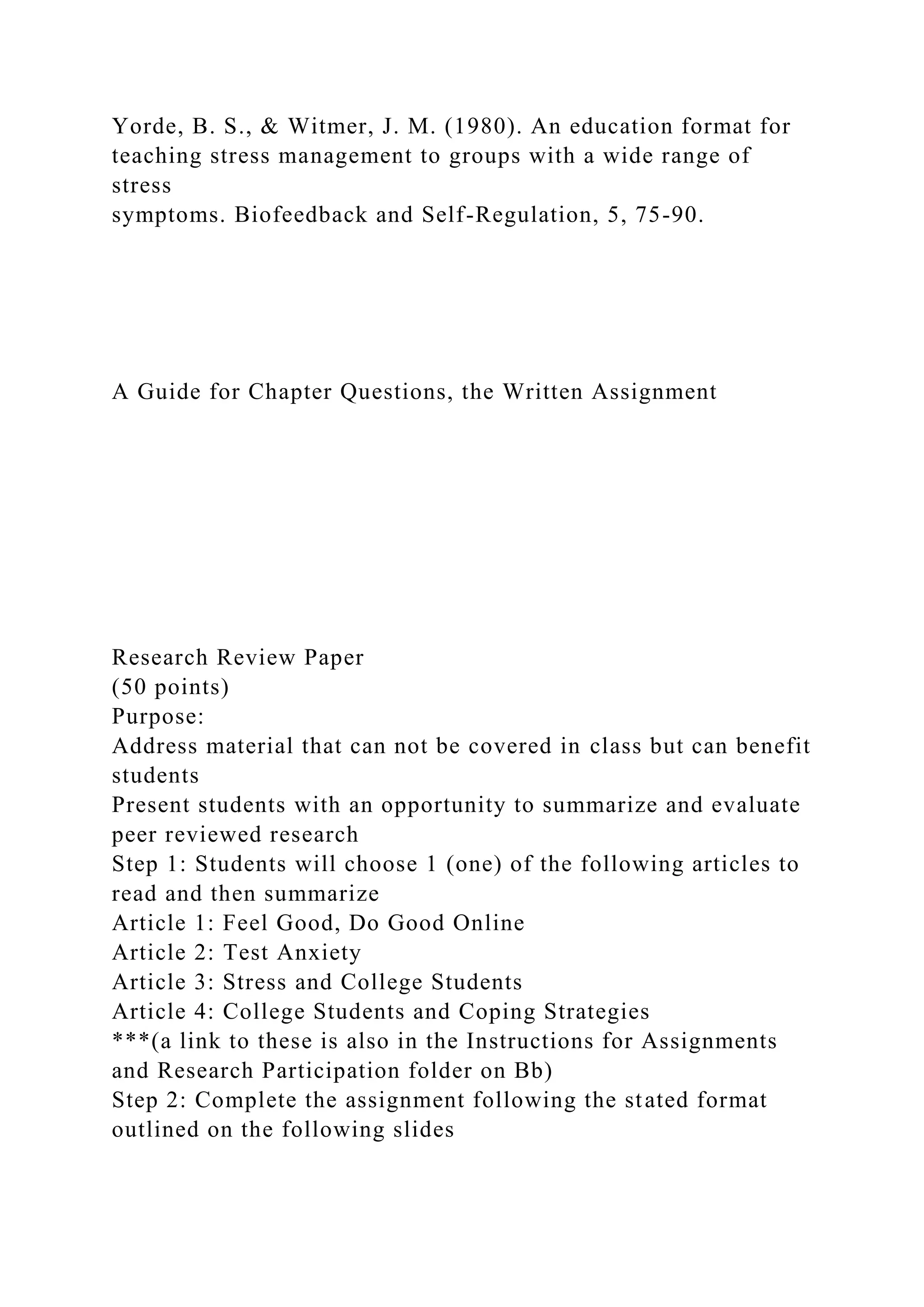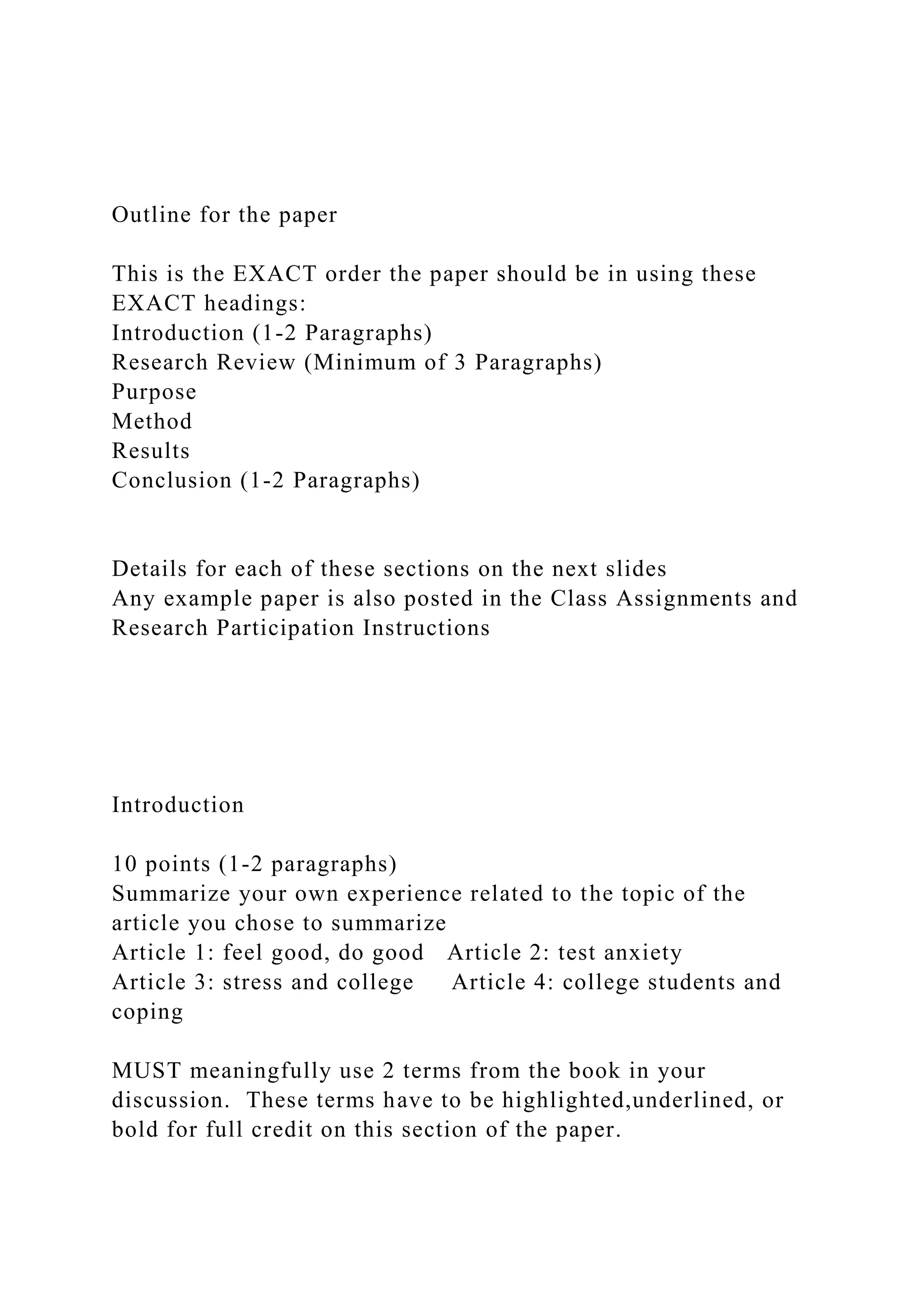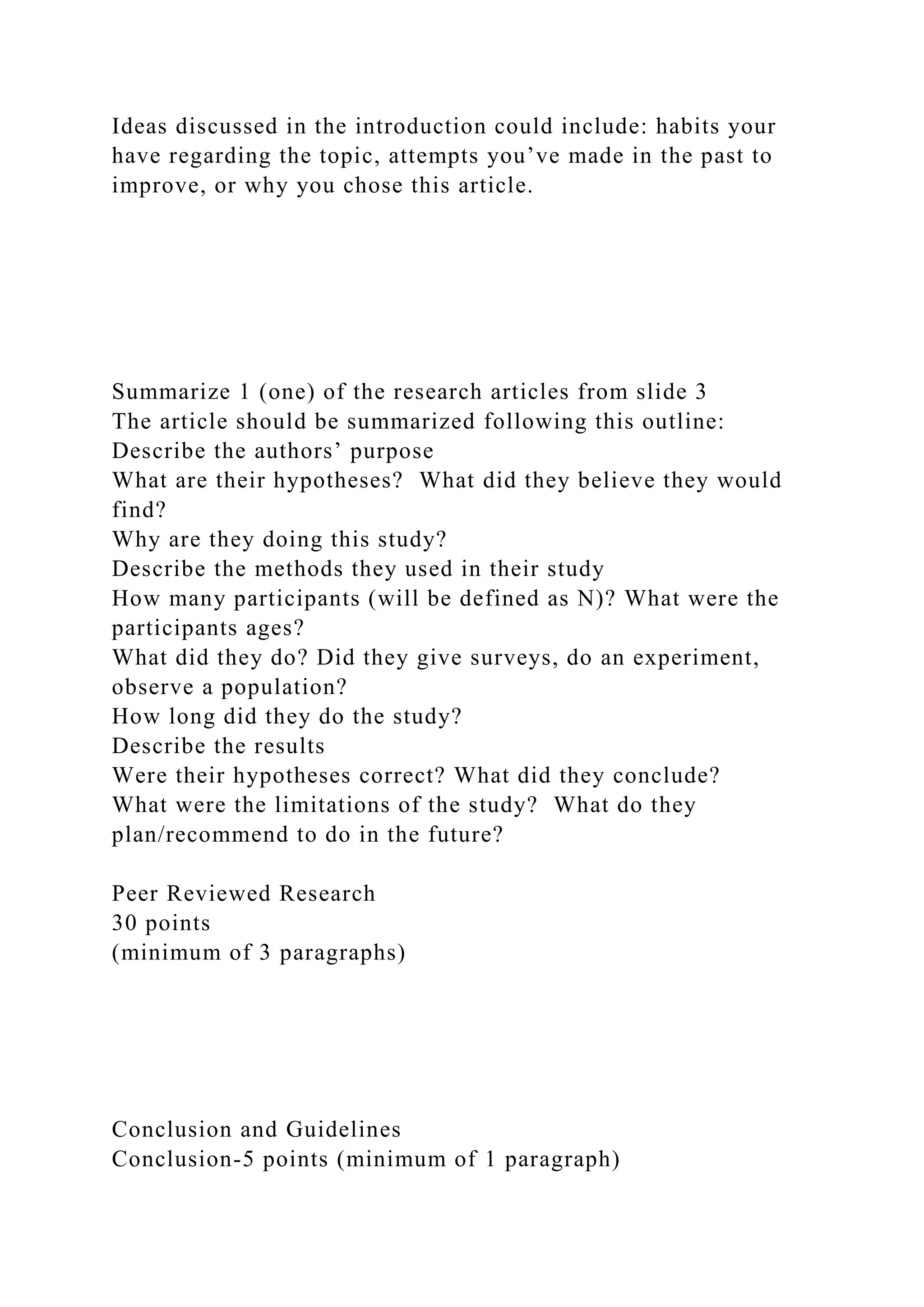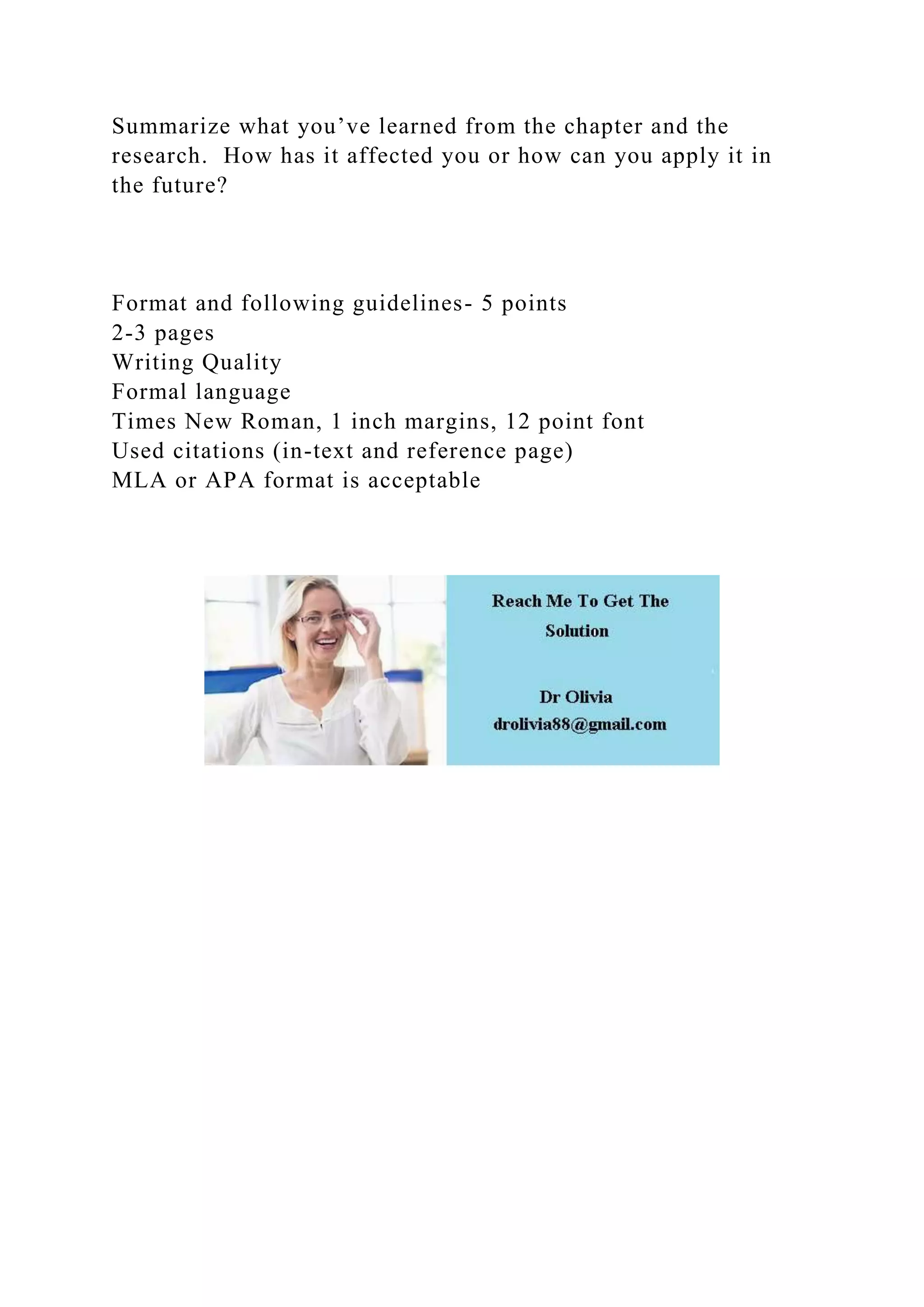The document discusses the importance of citations and references in academic writing, particularly in the context of stress management among college students. It highlights research on the effectiveness of various stress reduction interventions, including cognitive-behavioral techniques and physical activity, which showed significant improvements in perceived stress, test anxiety, and personal burnout among participants over a semester. The study aimed to identify which intervention methods might be most effective in reducing stress levels among college students.
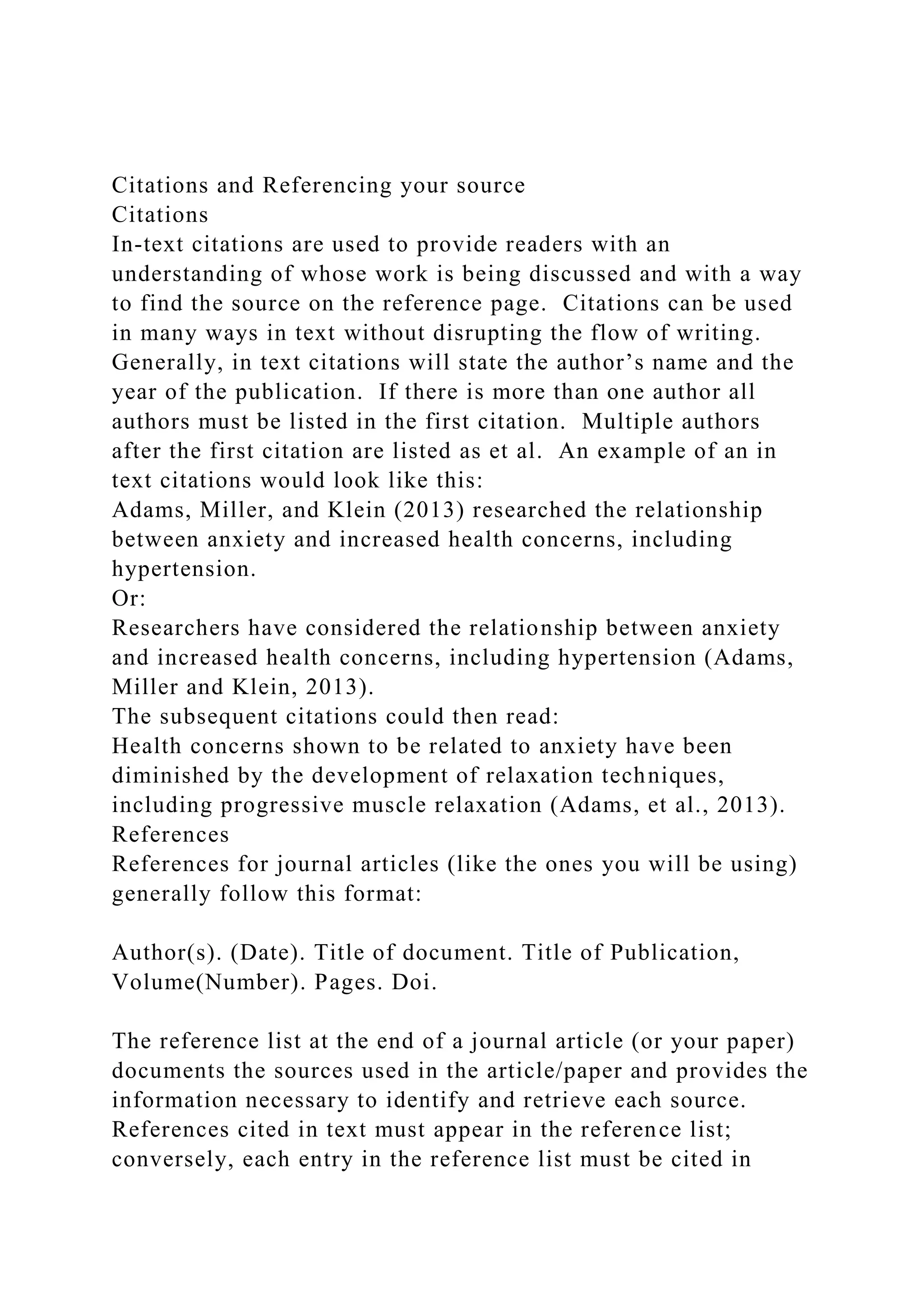
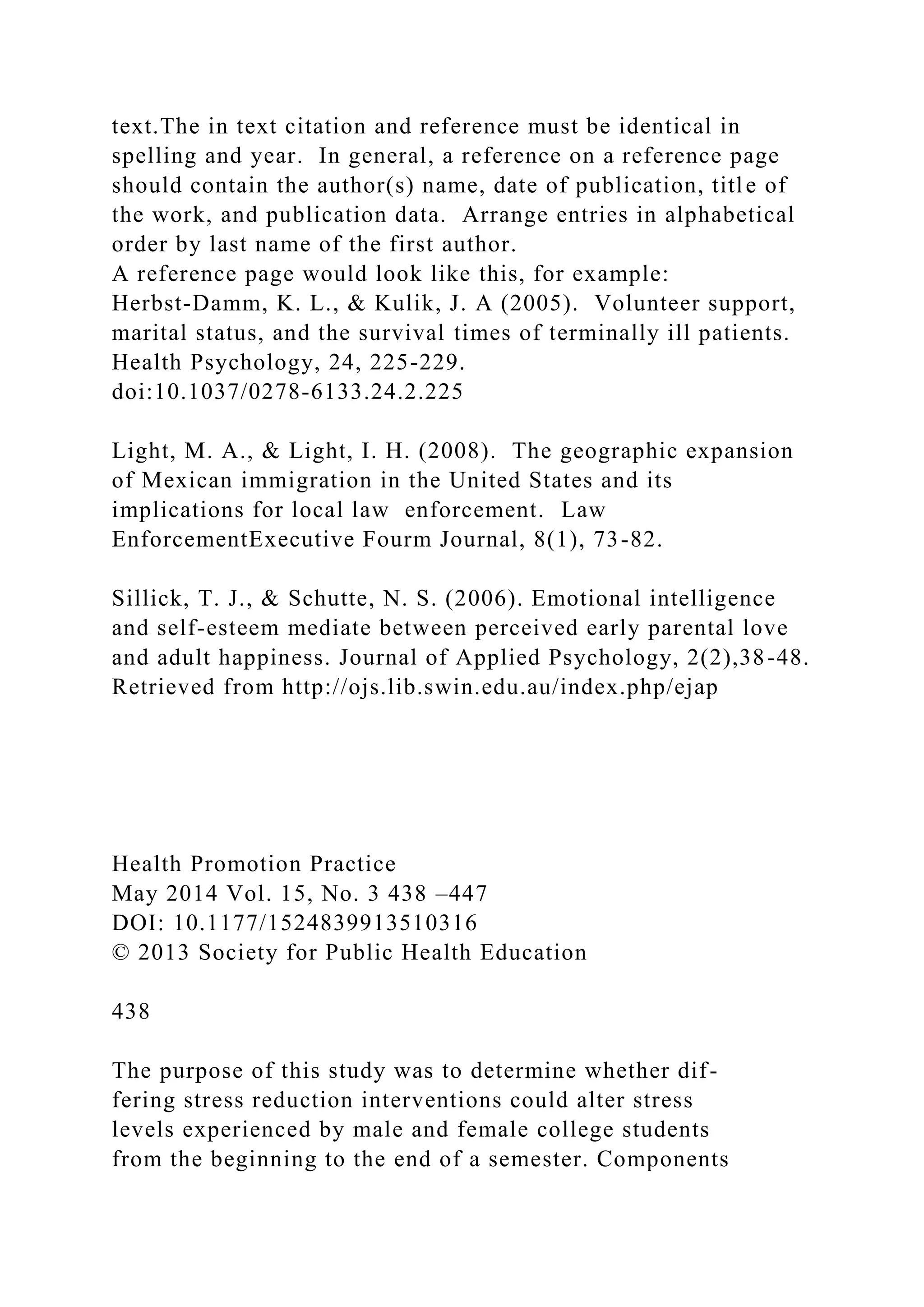

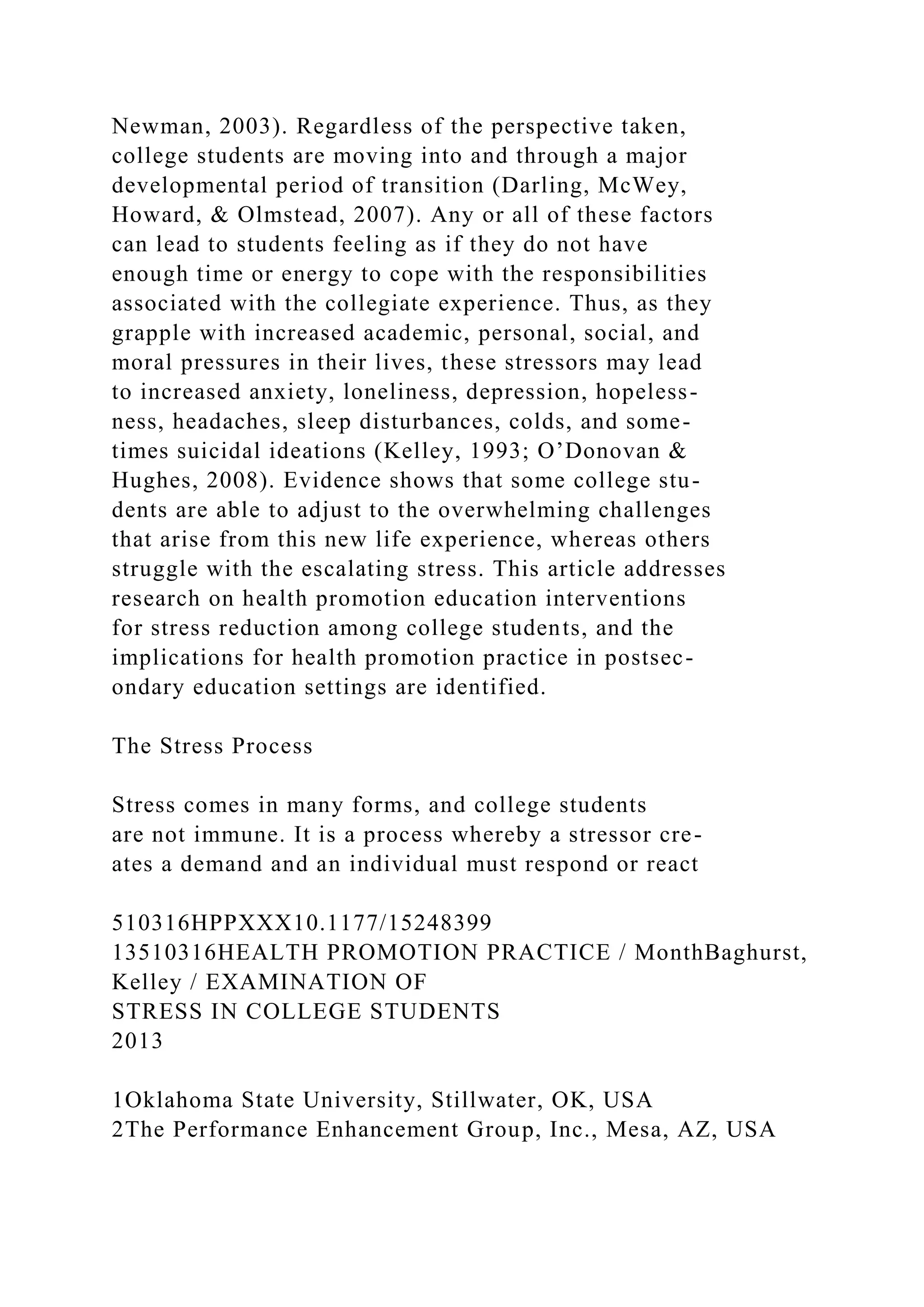
![An Examination of Stress in College Students Over
the Course of a Semester
Timothy Baghurst, PhD1
Betty C. Kelley, PhD2
Authors’ Note: Address correspondence to Timothy Baghurst,
Health and Human Performance, Oklahoma State University,
189
Colvin, Stillwater, OK 74078, USA; e-mail: [email protected]
mailto:[email protected]
http://crossmark.crossref.org/dialog/?doi=10.1177%2F15248399
13510316&domain=pdf&date_stamp=2013-11-14
Baghurst, Kelley / EXAMINATION OF STRESS IN COLLEGE
STUDENTS 439
to its demands. It is a transaction between the environ-
ment or situation and the person, which results in the
perception or cognitive appraisal that the demands of
the situation exceed the individual’s resources availa-
ble to meet or cope with those demands (Kelley, 1994;
Lazarus, 1990). Life stressors may be transient, such as
annoying everyday hassles, or more long term and
potentially traumatic.
Response to such stressors is influenced by both the
way in which events are appraised and an individual’s
effective response capacity. People who sense that they
have the ability and the resources to cope are more
likely to take stressors in stride and take action con-
structively. However, experiences that consistently
lead to a negative stress appraisal can cause both](https://image.slidesharecdn.com/citationsandreferencingyoursourcecitationsin-textcitation-221112063817-b0b39c83/75/Citations-and-Referencing-your-sourceCitationsIn-text-citation-docx-5-2048.jpg)
